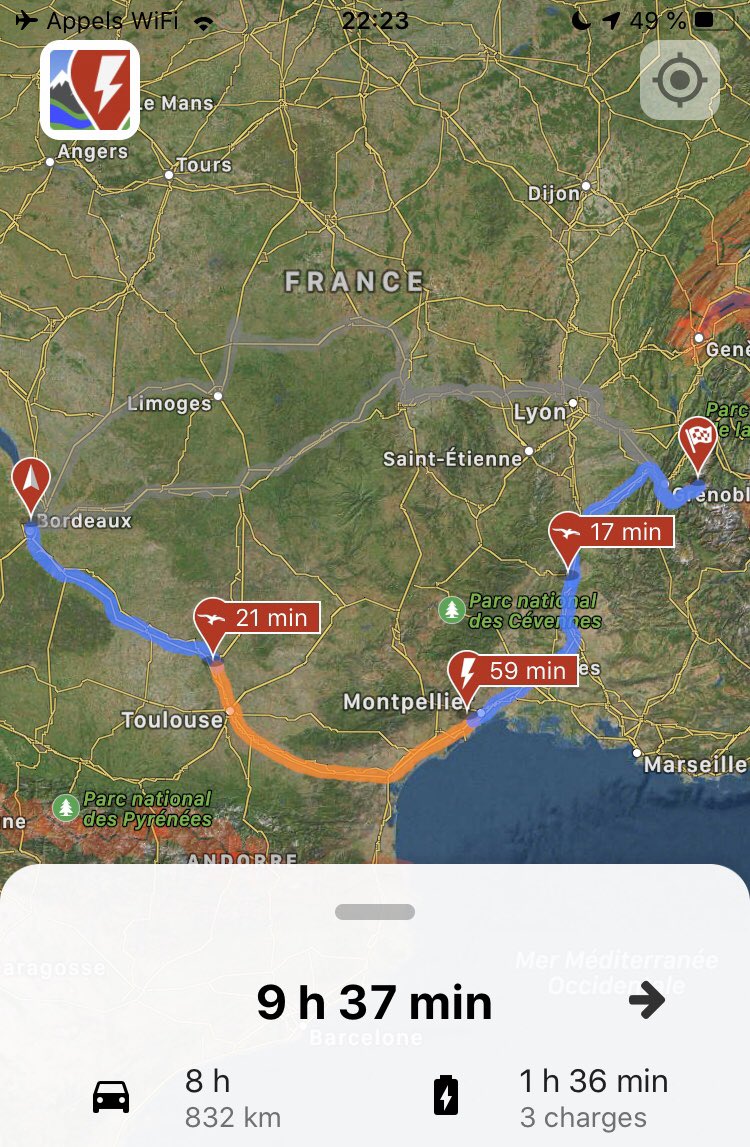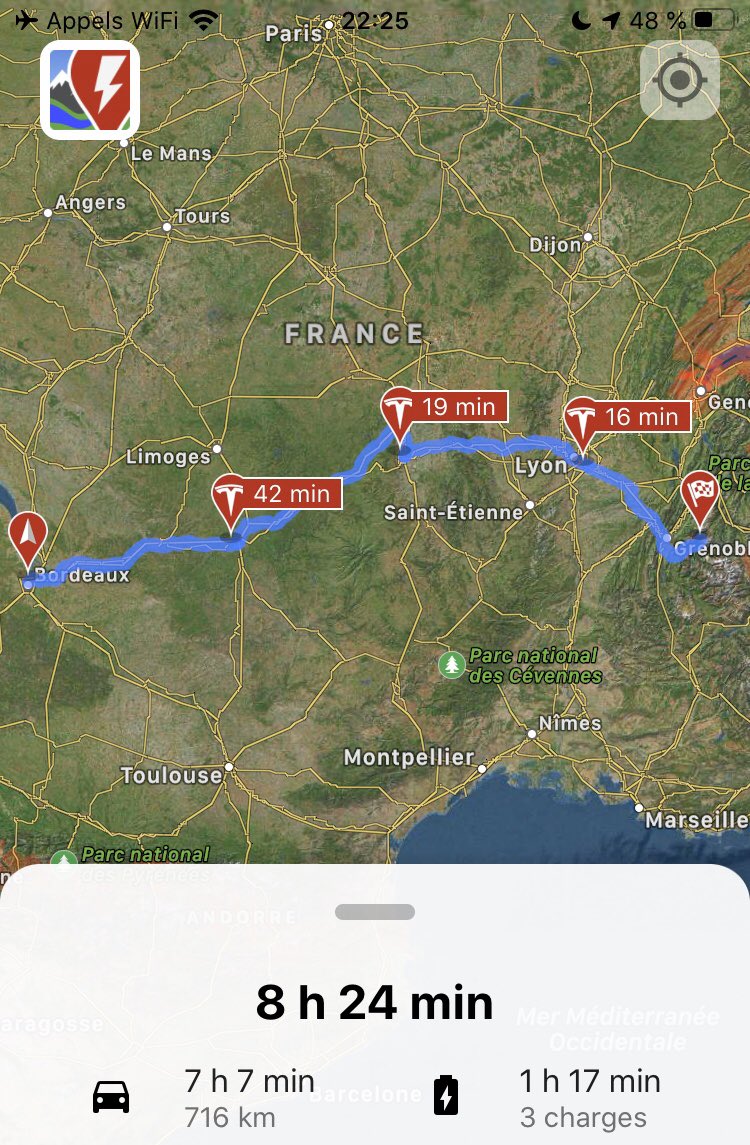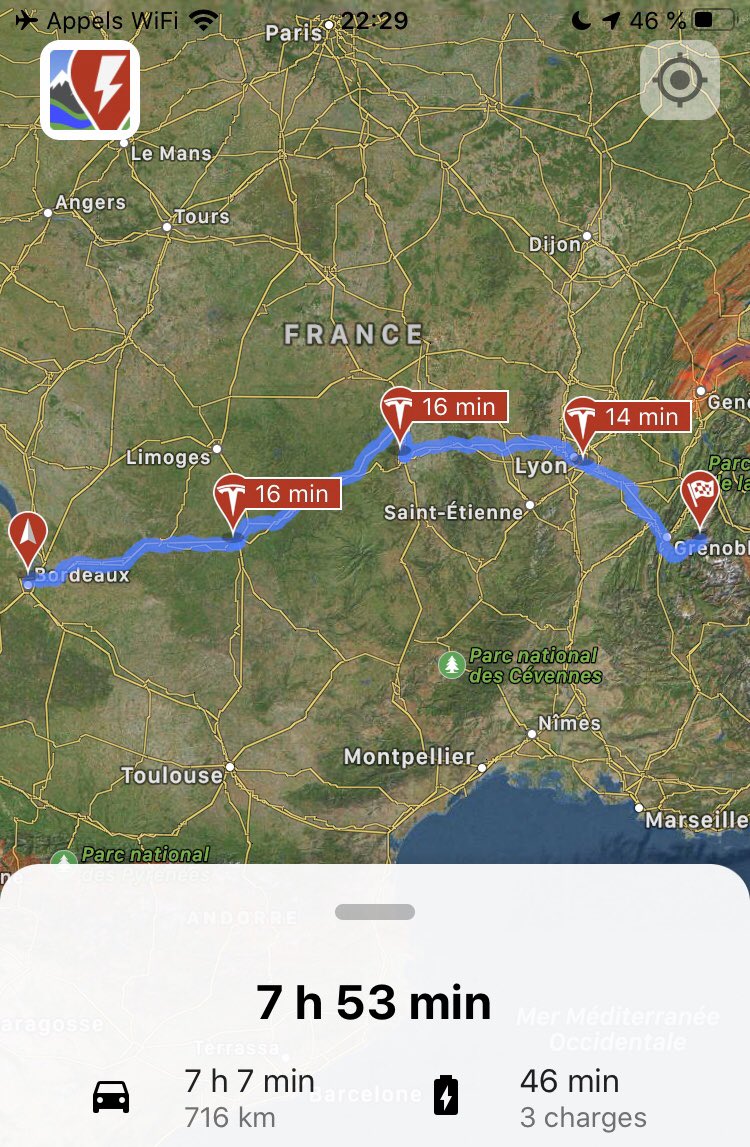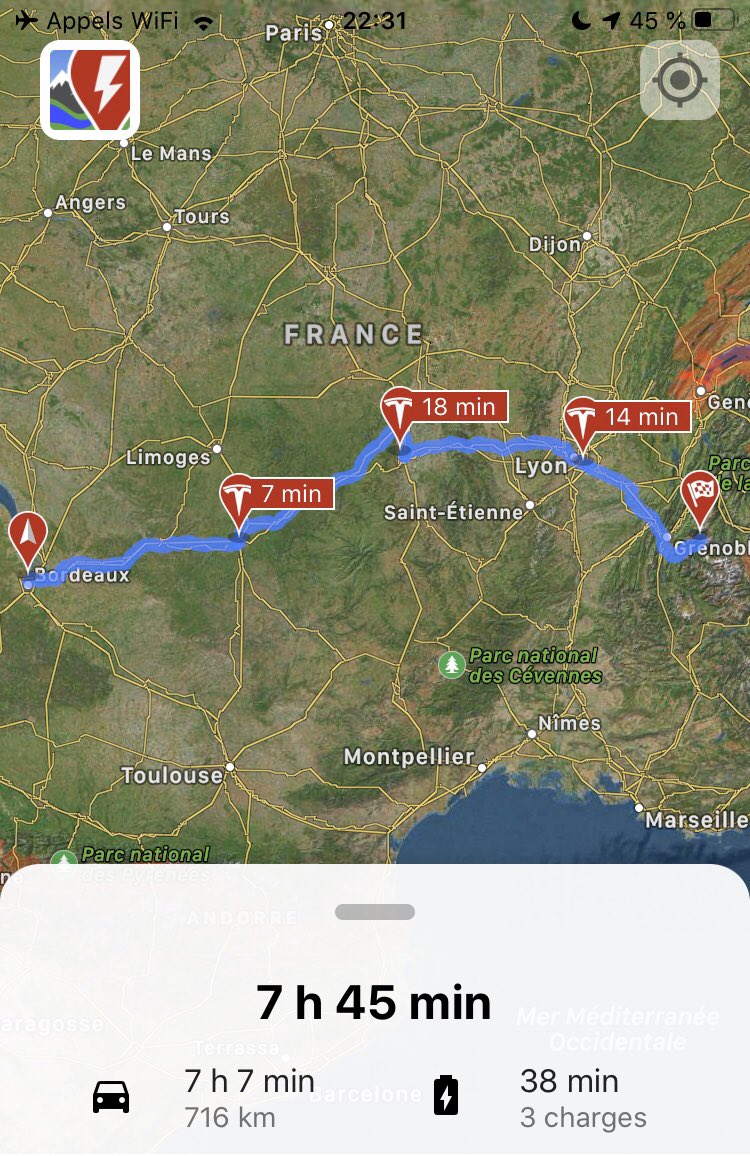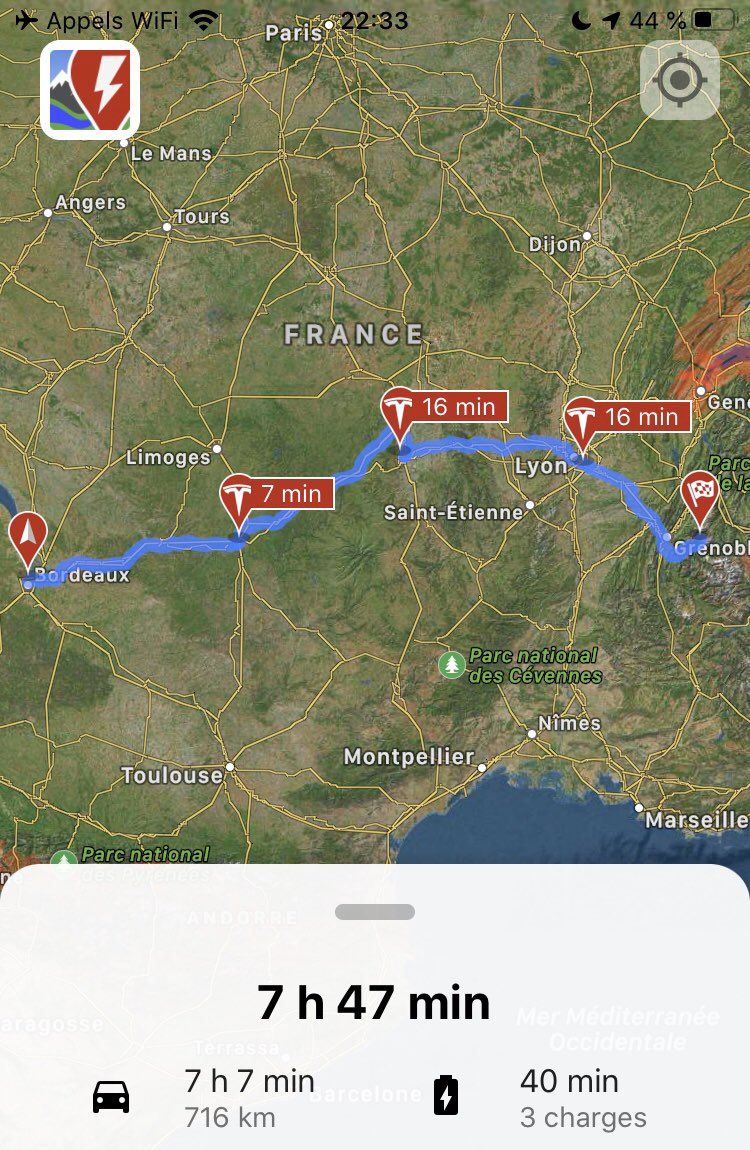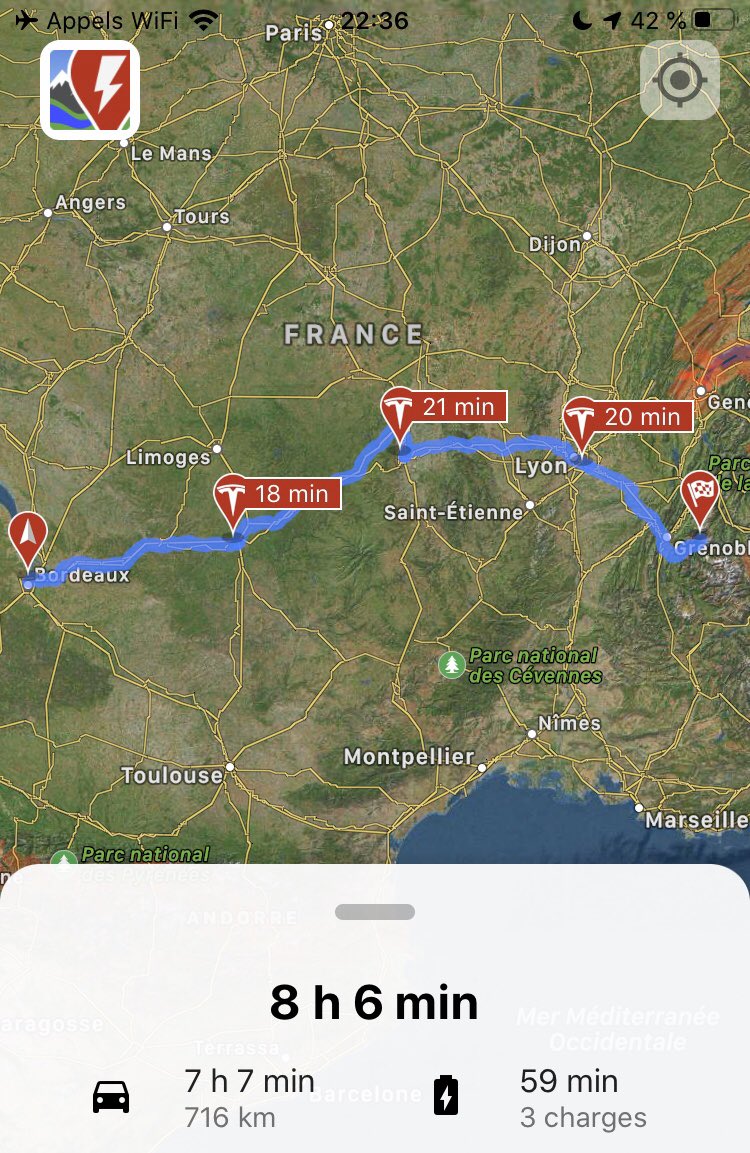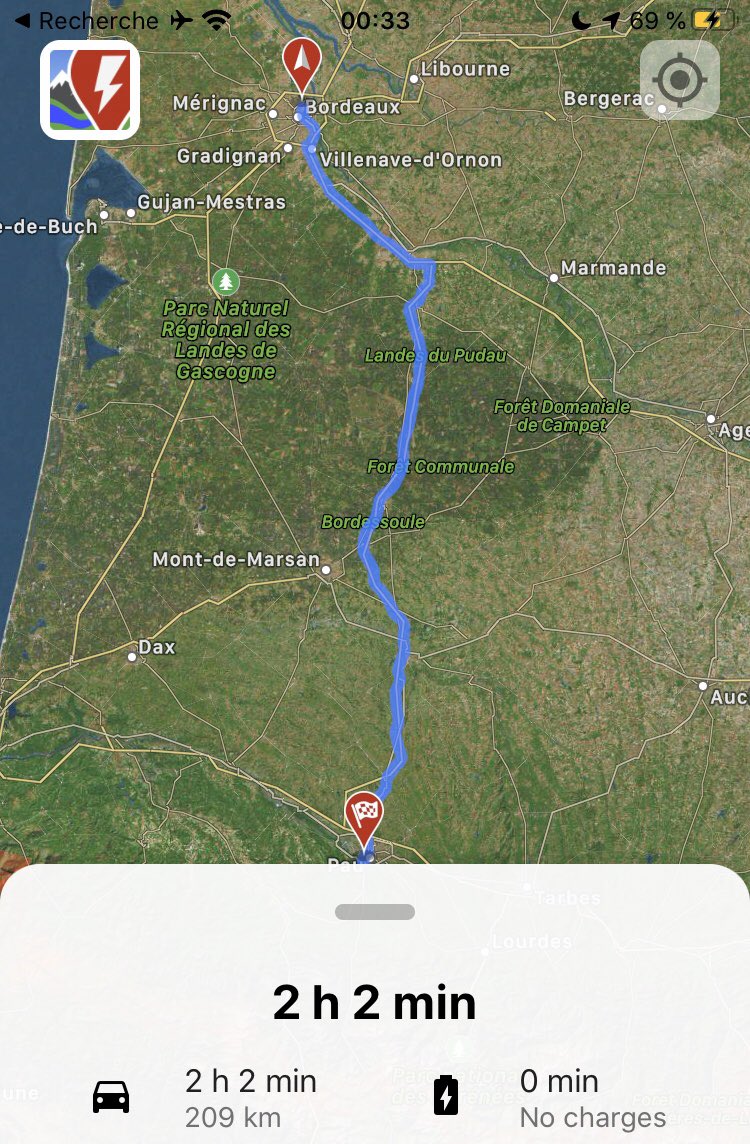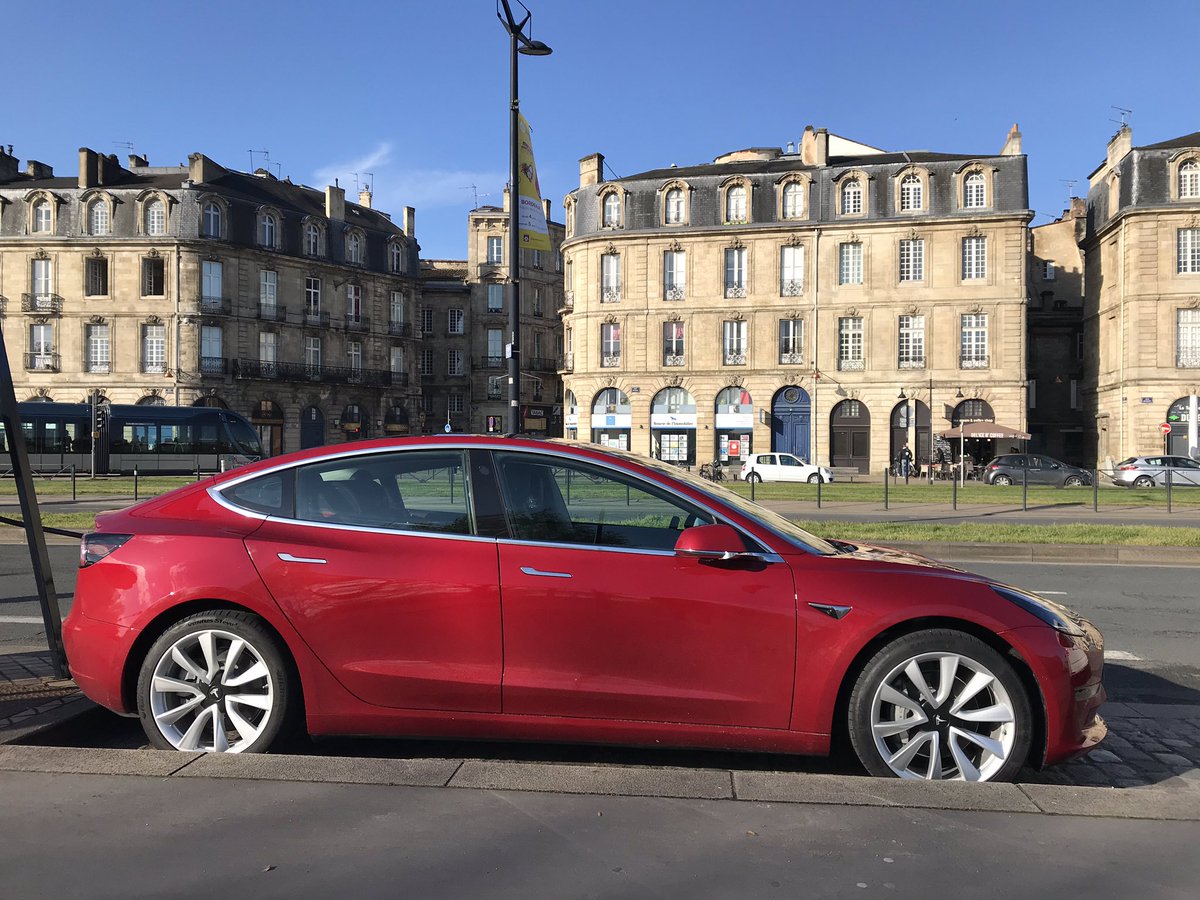Having the freedom of going anywhere and stopping wherever you want on the way 😊
mobile.twitter.com/search?q=%23Ro…
I didn’t buy a @Tesla for city driving. I bought it exclusively for #RoadTripping, because it’s an #EV.
#ClimateCrisis
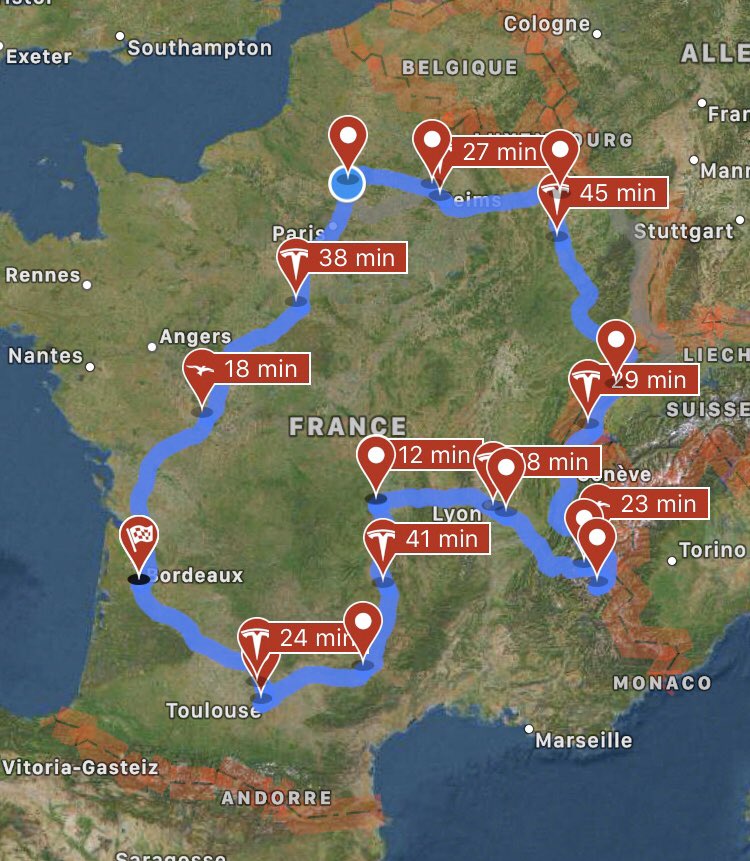
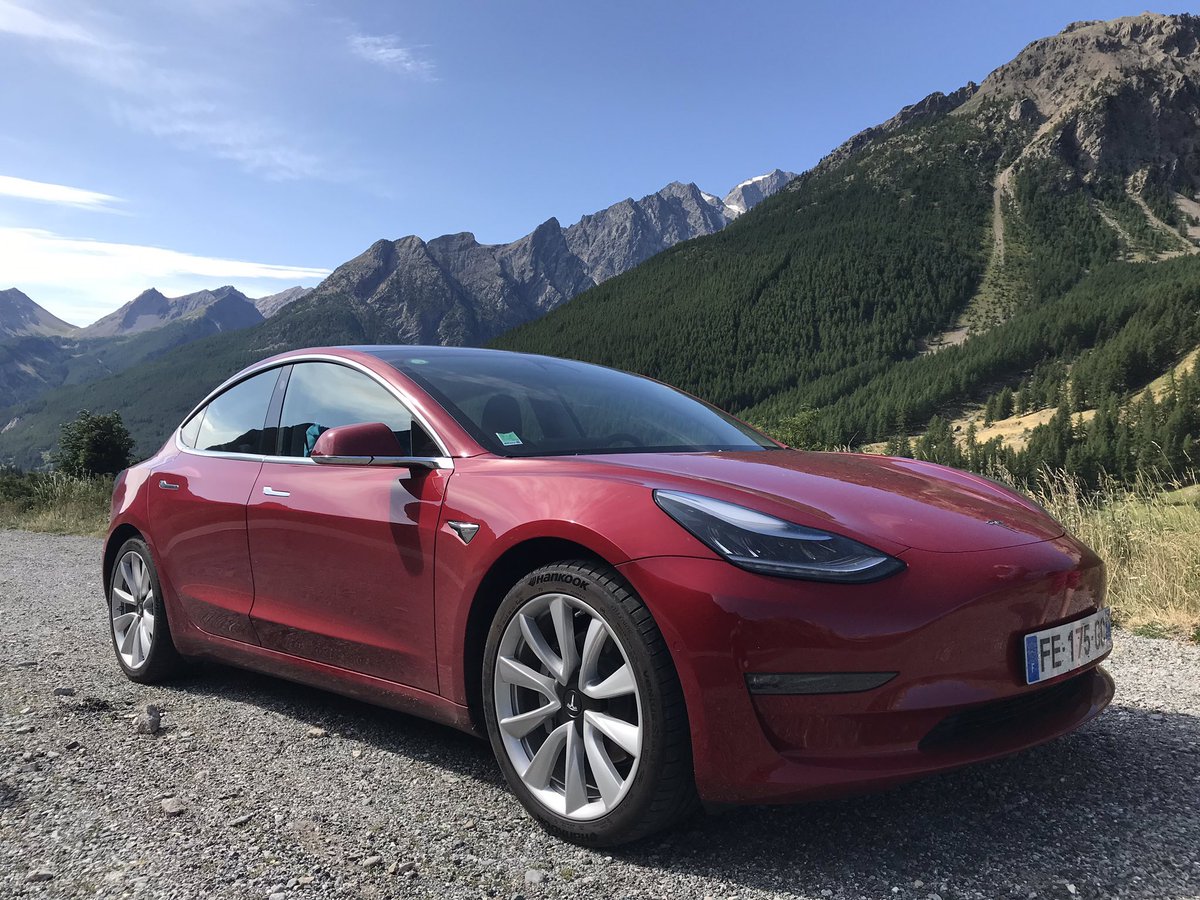

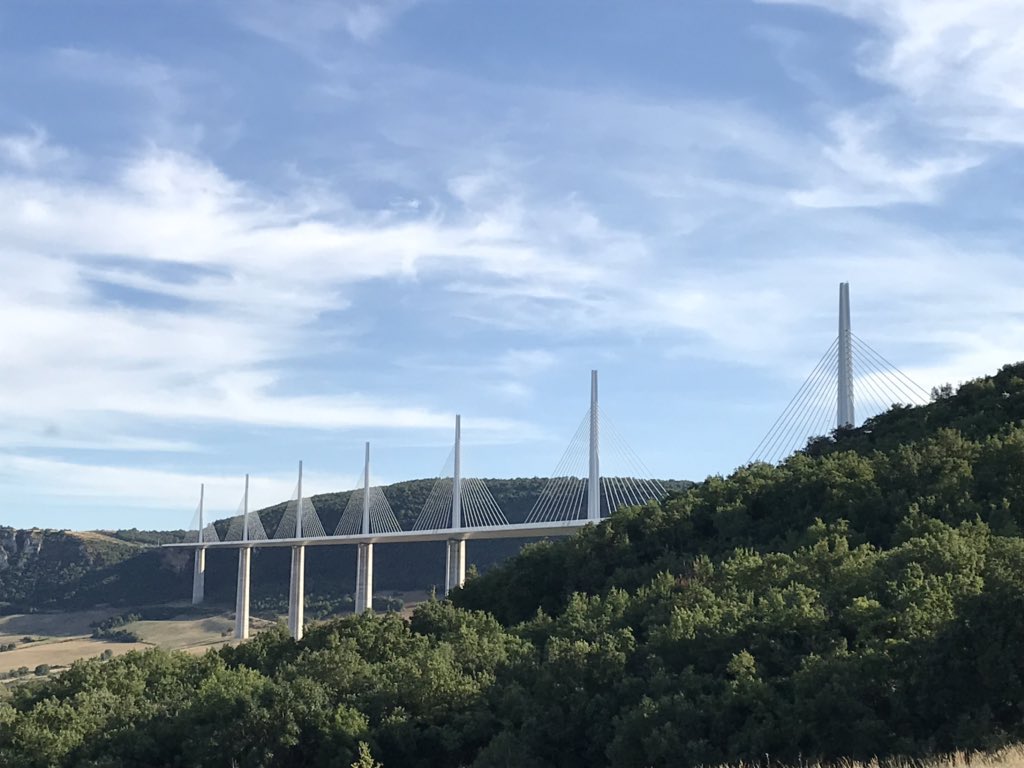
I am getting around the city of @Bordeaux by bicycle as this is the most convenient and quick way to move in a European urban environment 🚲😊
For #RoadTrips outside the town I used #CarSharing (up to a few weeks).
🚗⛽️💨💨💨💨💨💨💨💀
#Pollution
Then the @Tesla Model 3 was unveiled and I knew it would become the #MostImportantCarEver, the one that would finally make #EV mainstream.
🚗🔋⚡️🤖🤩👍🏻
🚗🔋⚡️🤖🤩👍🏻
That, combined with the fact that you can fill your battery with 100% renewable energy, provide a clear path to dramatically reduce transportation CO2 emissions 😊

In a #FossilCar we would have emitted more than 1 600 kg of CO2 if we believe the official WLTP figures for an average car given for about 100 g/km...
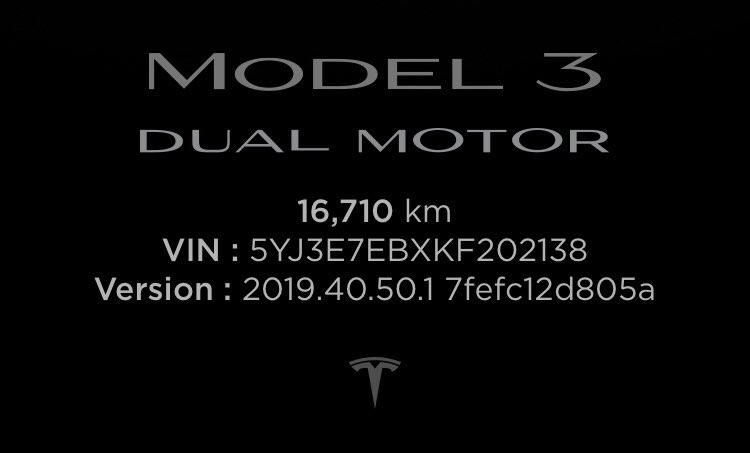
🚗🔋⚡️☺️
But are all #EV created equal?
Are they all able to #RoadTrip without compromise or with very little inconvenience compared with a #FossilCar, so that Mr Smith or Ms Dupont ditch their gas guzzler and switch to an #EV?
#Efficiency
#BatterySize
#Range
I’ll use the International System to describe the various metrics. This system is used anywhere on earth except the USA 🇺🇸😉
Efficiency is measured in Wh/km, similar to #FossilCars l/100km ☺️
Unfortunately the battery is the most expensive component of an #EV and also weighs a lot...
So with a bigger battery, the car weighs more and becomes less efficient 😒
Charging network density and speed.
And that varies for every car...
The main plugs for DC fast charging (#DCFC) ie the chargers that provide the highest speeds, necessary for #RoadTrips, are #CCS (the European stardard), #CHAdeMO and @Tesla #SuperChargers.


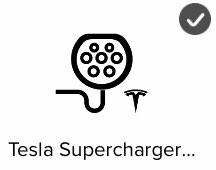
All #SuperChargers have been retrofitted early 2019 with #CCS plugs to prepare for the Model 3 invasion.
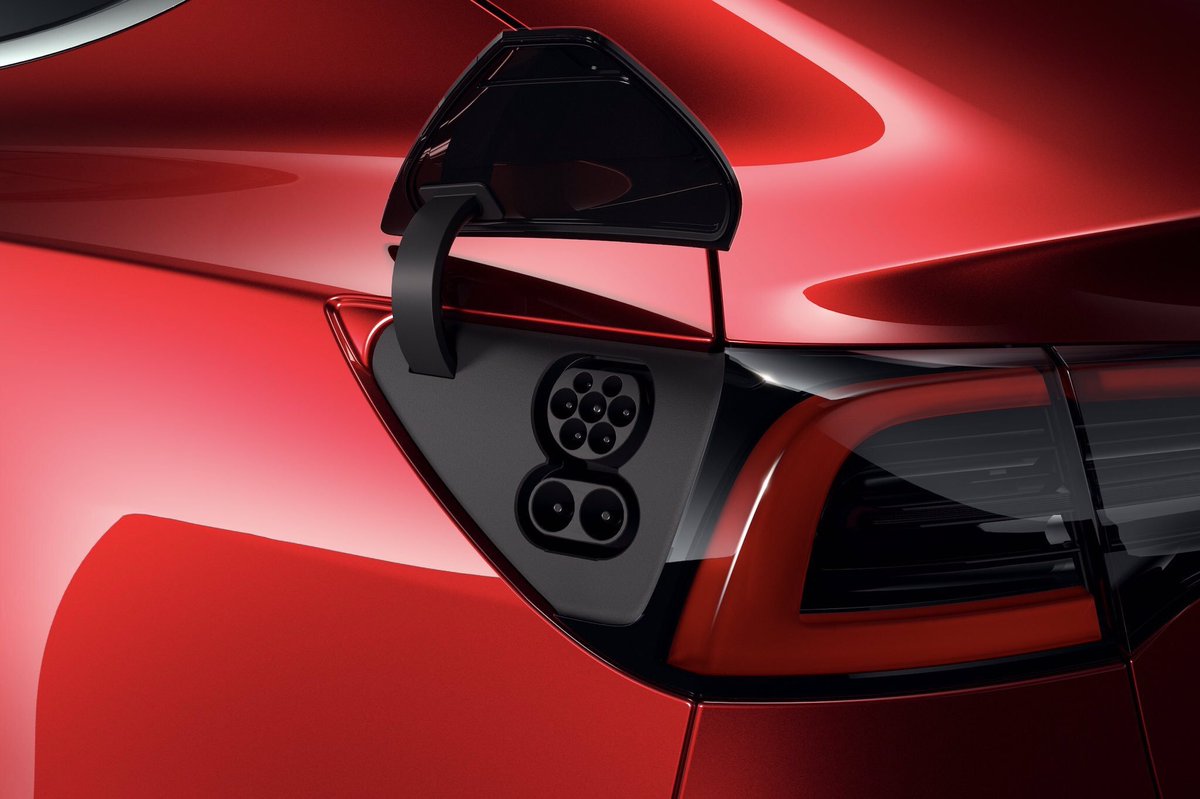
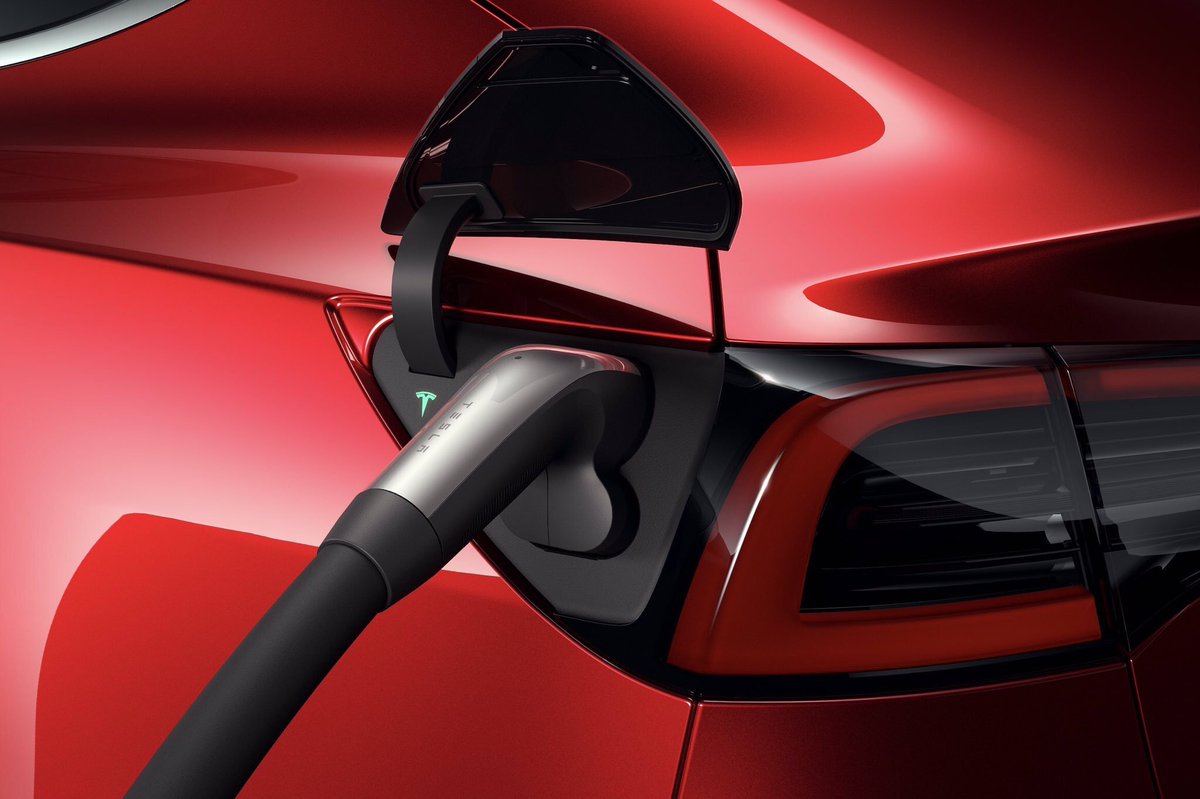
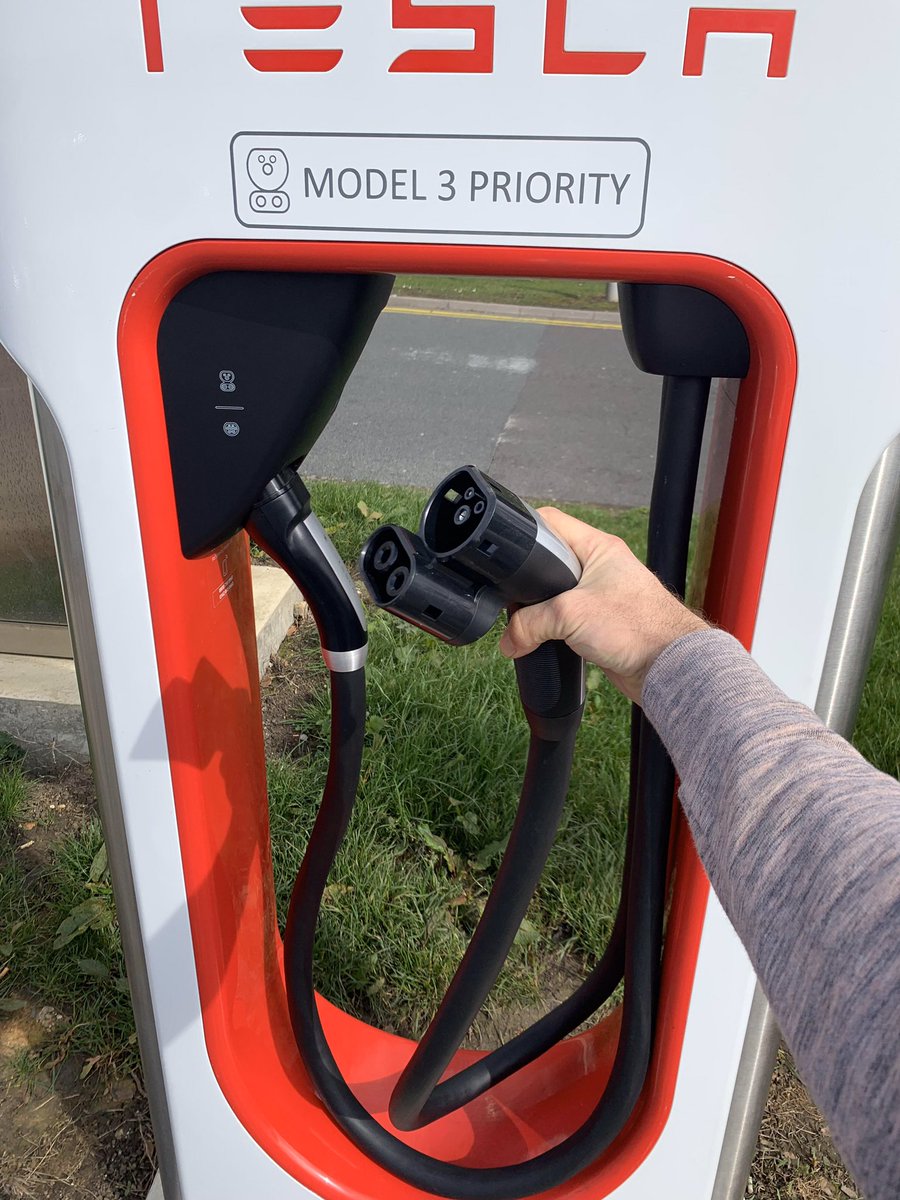
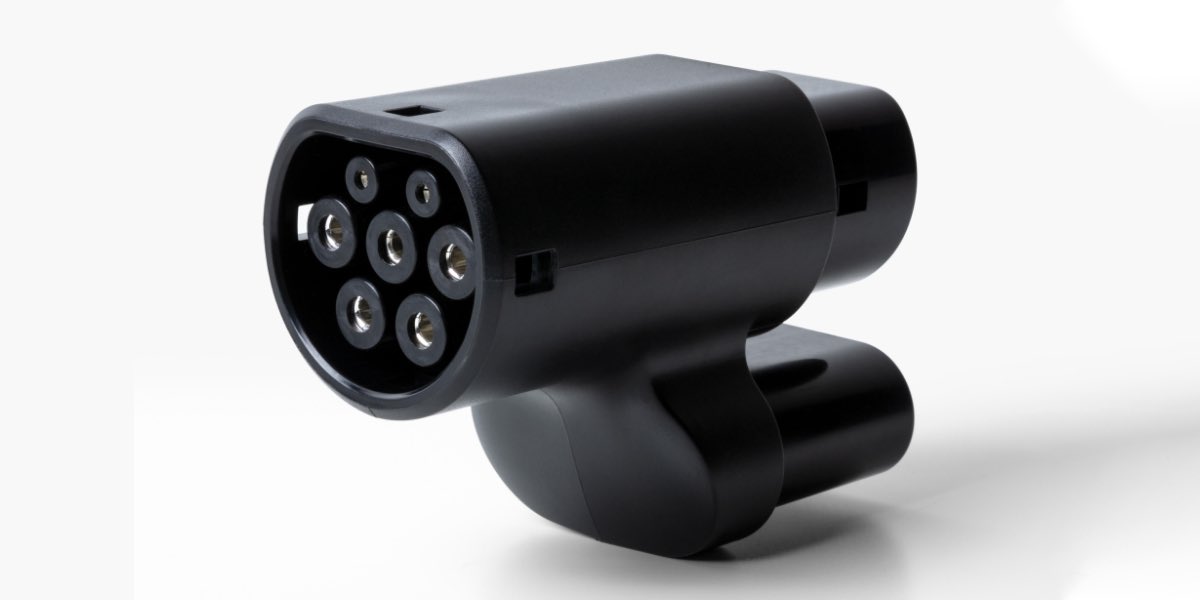
But the new, faster #SuperChargers V3 have only the #CCS plug, which means that Model S & X will have, in the near future, to get a #CCS adapter.
Standardization is a mess, but normally, unless you plan a world roundtrip with your car, only regional standards should matter.
Obviously if you want to minimize travel time, you need to find a compatible charger (plug) & have your car accept a high speed.
#DCFC charger speeds range from 50 kW to 350 kW.
Each car has a maximum charging speed. No car today allows 350 kW.
When you chose an #EV, you chose a plug and charging speed (in addition to price, style, performance, quality, tech, efficiency, battery size, range...)
I think that’s the case for the @NissanElectric LEAF e+ but their website is such a mess that I couldn’t find this important info...
You’d have access to... TWO 100 kW chargers in France 🇫🇷...
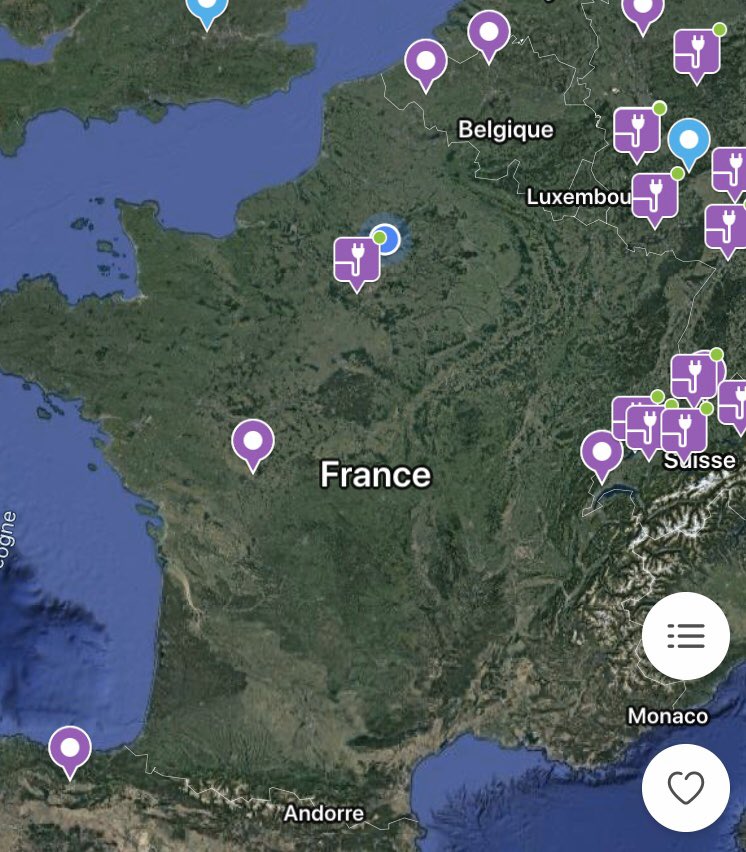
But your charging time is multiplied by two. You paid for a 100 kW charging speed not so useful in real life if you can’t find a charger able to deliver that speed.
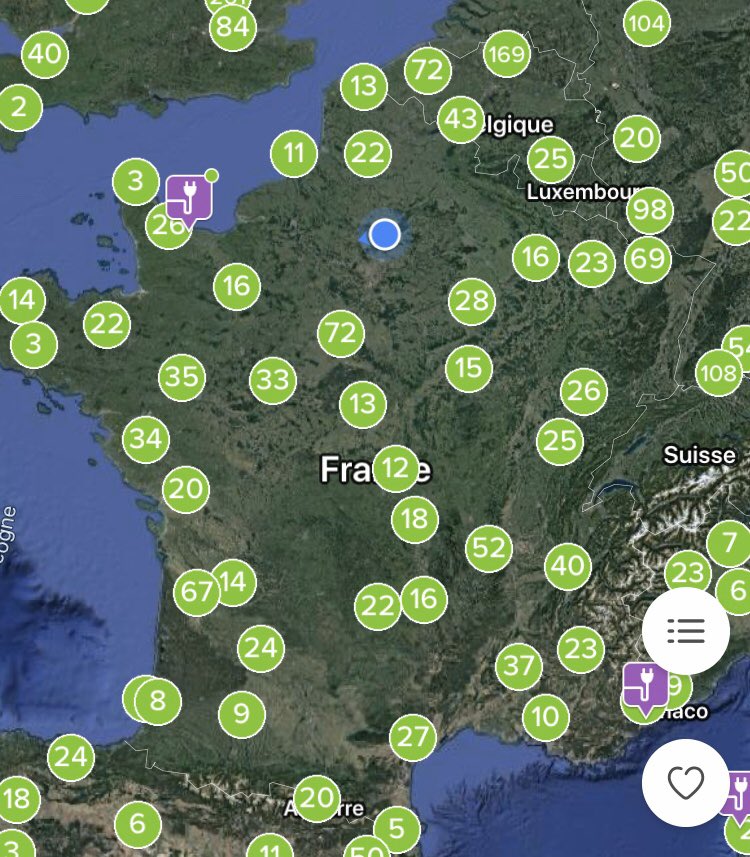
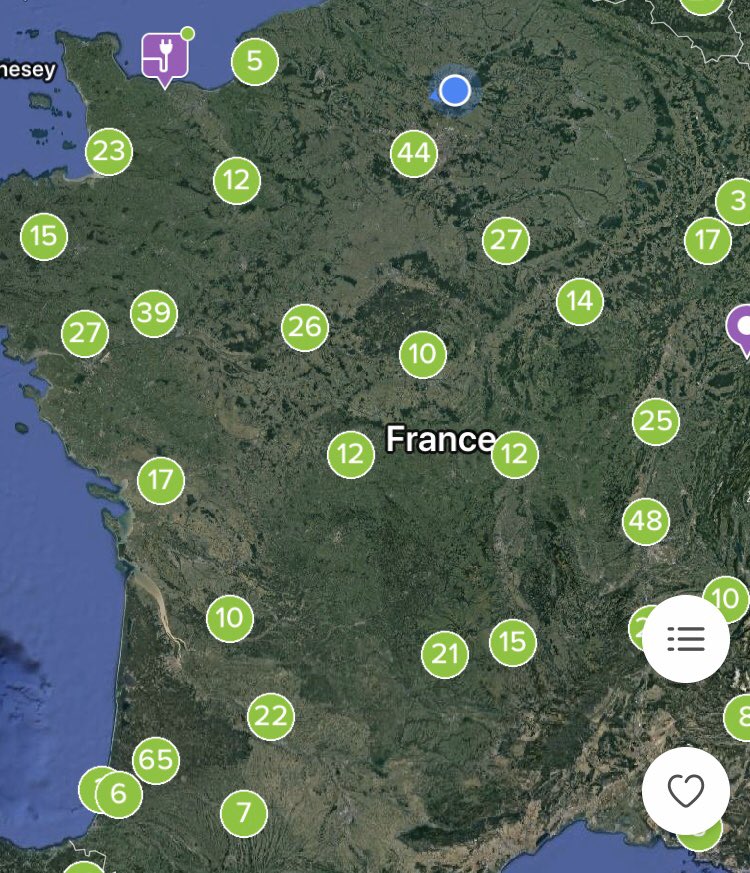
Did I mention that @Tesla V2 #SuperChargers provide 150 kW and the new V3 #SuperChargers provide 250 kW?
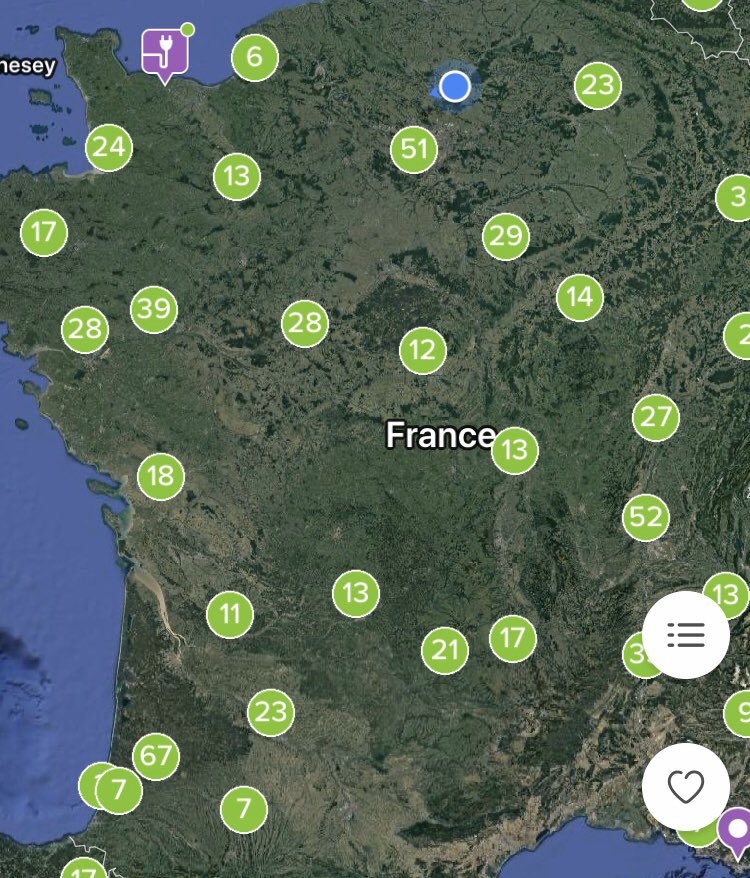
Up to my knowledge the conditions being that:
- the cars need to accept at least 100 kW
- the car manufacturer needs to participate in building the network
Your mileage may vary 😉
To compare different #EV we will use @RouteBetter with those settings ☺️
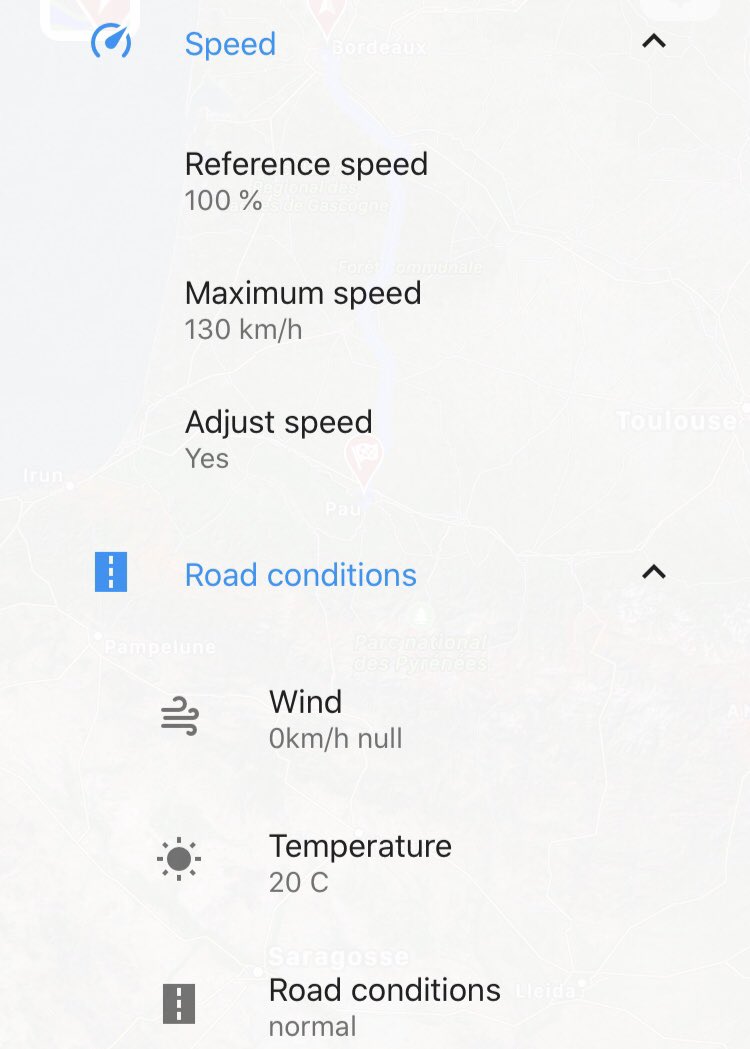
A few weeks later we drove our first (small) road trip to see my sister and her family in Pau.
A bit more than 200 km at highway speed (130 kph in France 🇫🇷), it should be a piece of cake.
Reference consumption is 200 Wh/km @ 110 kph.
Zoé & e-208 had to drive 110 kph to make it. The LEAF is a quicker in 2 h 9 min as it drives 120 kph.
Non-stop as well 😊

@MercedesBenz EQC has a 80 kWh battery with #CCS up to 110 kW.
Reference consumption is 256 Wh/km @ 110 kph.
The trip is done non-stop in 2 h 2 min 😉
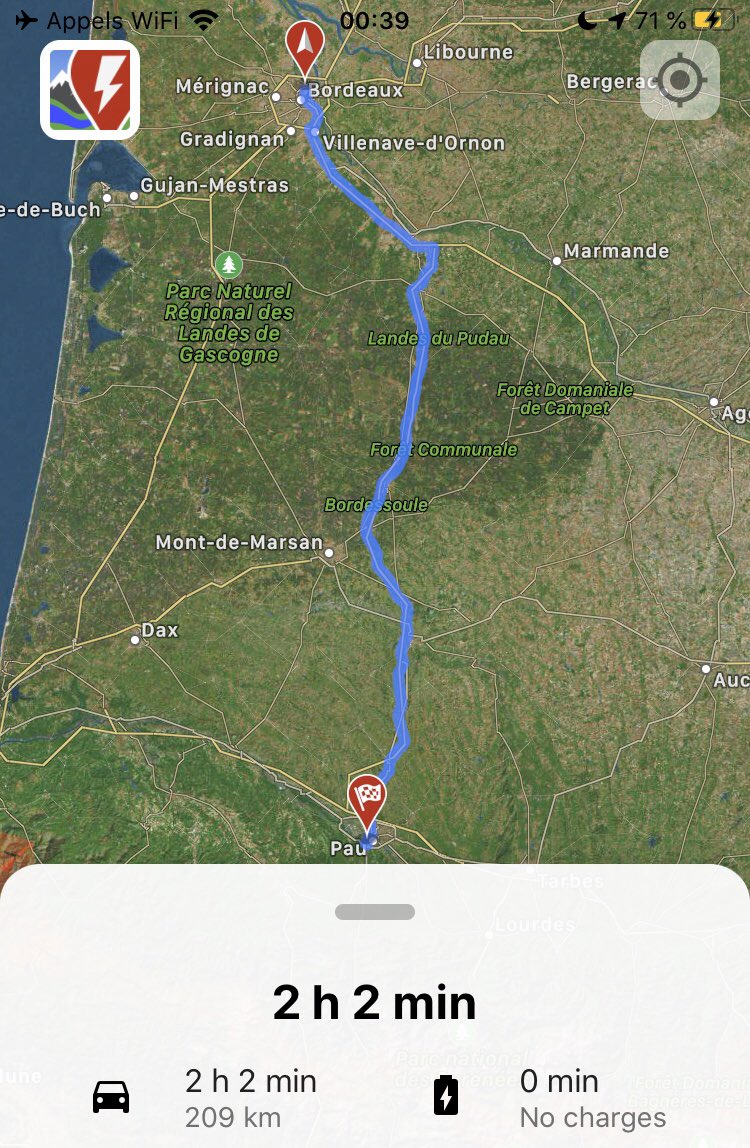
Reference consumption is 160 Wh/km.
Of course, it can make the trip in 2 h 2 min 😁
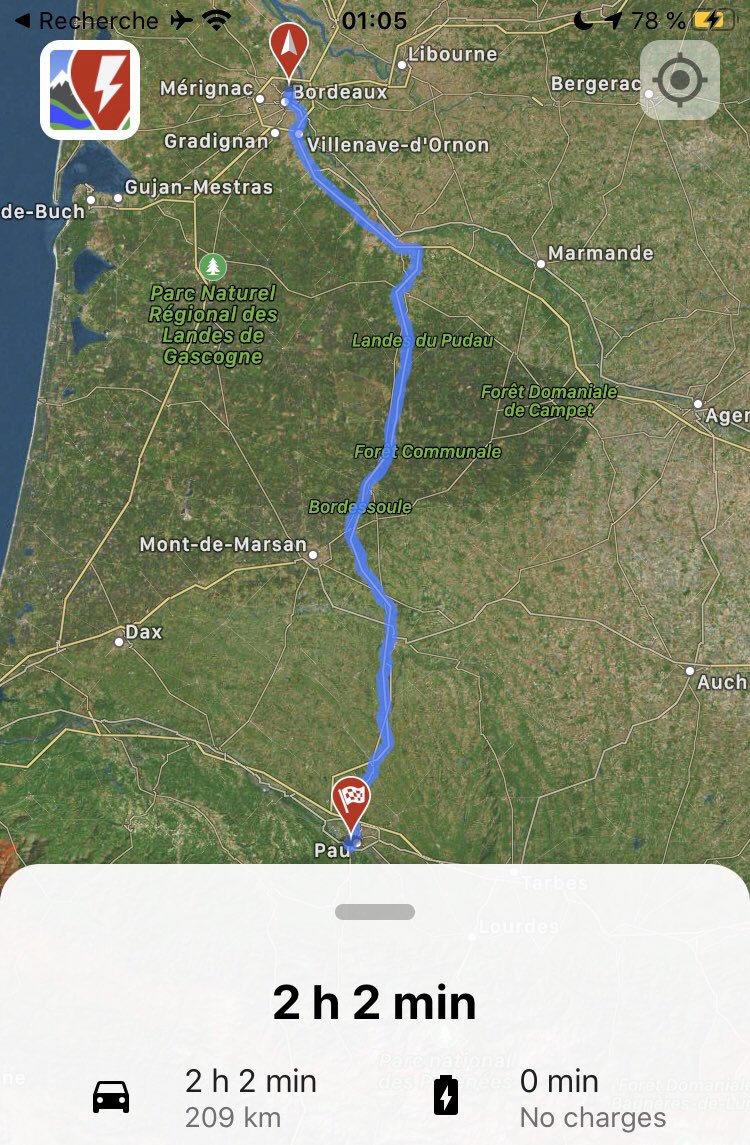
Reference consumption is 180 Wh/km.
Surprise! It makes the trip in 2 h 2 mins 🤪
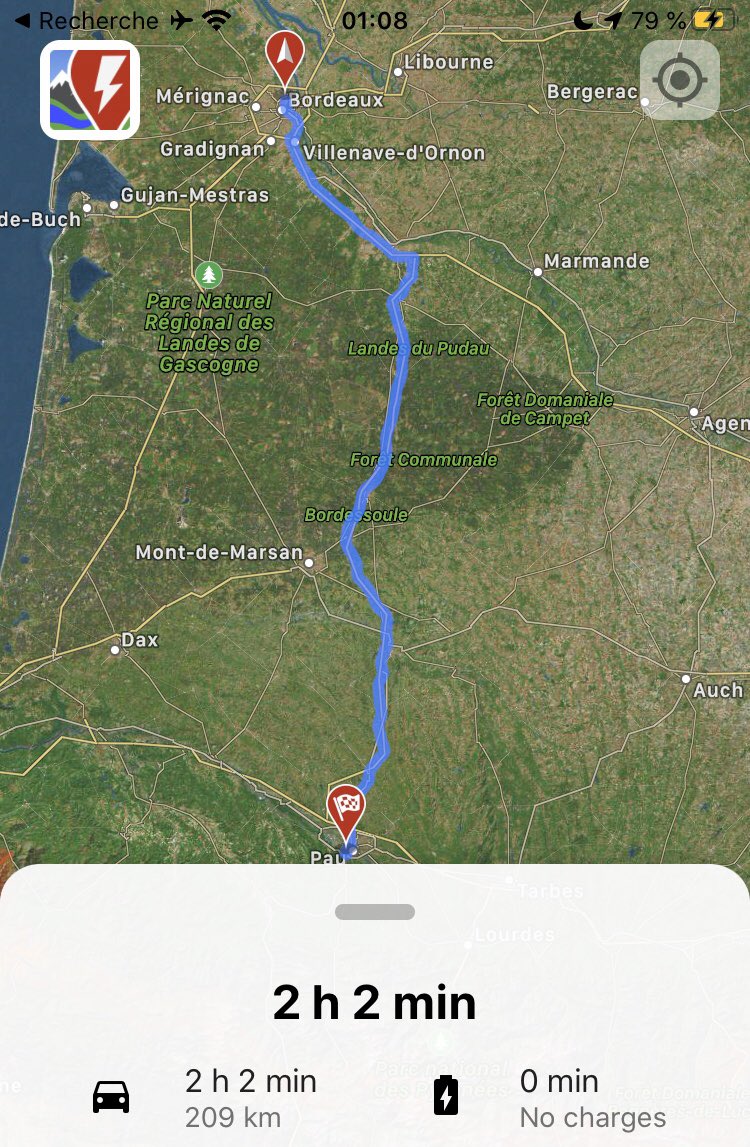
Reference consumption is 190 Wh/km.
Exact same time of 2 h 2 min 🧐
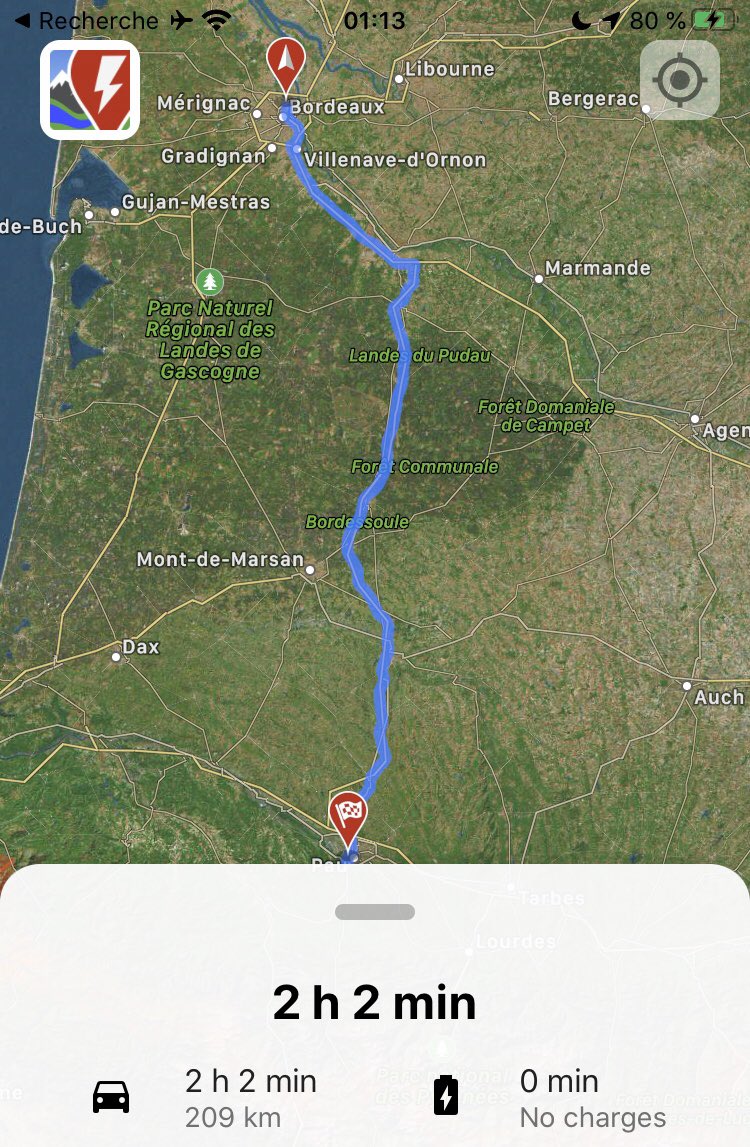
Reference consumption is 185 Wh/km @ 110 kph.
Trip done non-stop also in 2 h 2 min 🤨

Reference consumption is 190 Wh/km @ 110 kph.
Same non-stop trip in 2 h 2 min 🥳

The @Tesla Model X Long Range has a 102 kWh battery with 200 kW #CCS and #SuperCharging.
Reference consumption is 220 Wh/km @ 110 kph.
Same non-stop time of 2 h 2 min 🤓
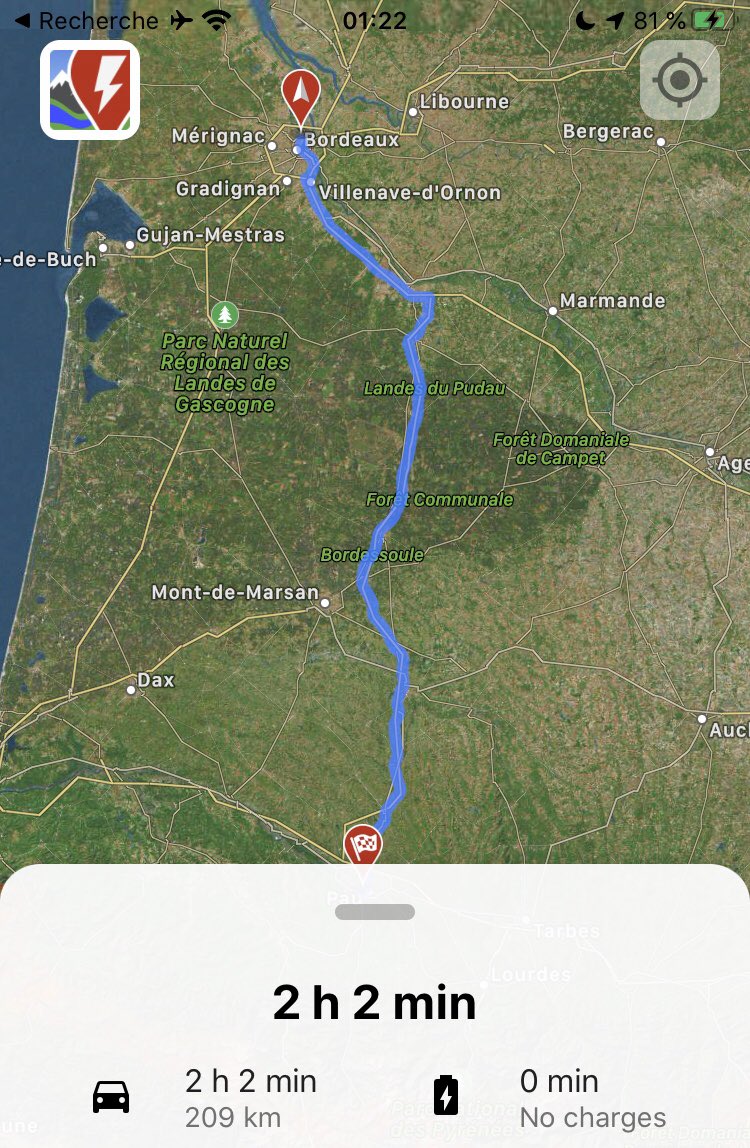
Reference consumption is 230 Wh/km @ 110 kph.
Exact same non-stop trip time of 2 h 2 min 🤩
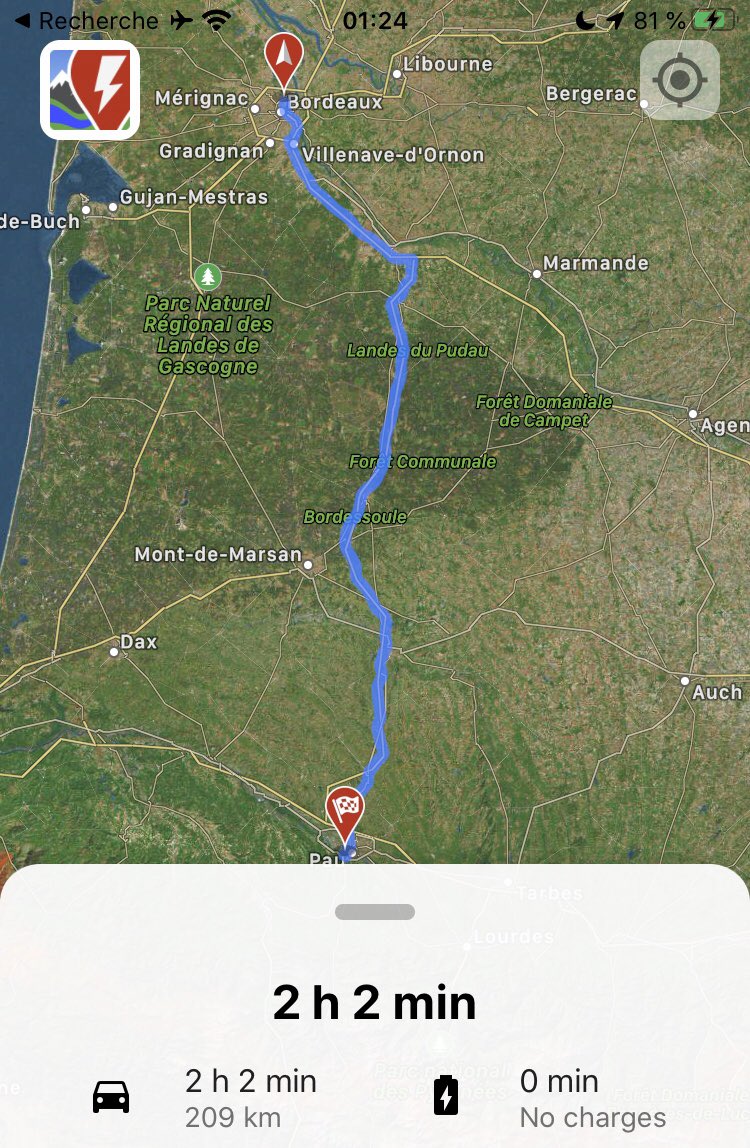
And you know what? It’s great news!!! 🥳👍🏻
It means #EV can do a 209 km non-stop trip 🤩... That wasn’t the case 10 years ago 🤯
Now that the contenders have been introduced let’s move to more serious stuff ☺️
Direct route is 252 km via the 130 kph highway (20 € toll each way 😱). We drove non-stop in 2 h 15 min. This is real life so it accounts for road traffic.
Let’s see how other cars would perform.
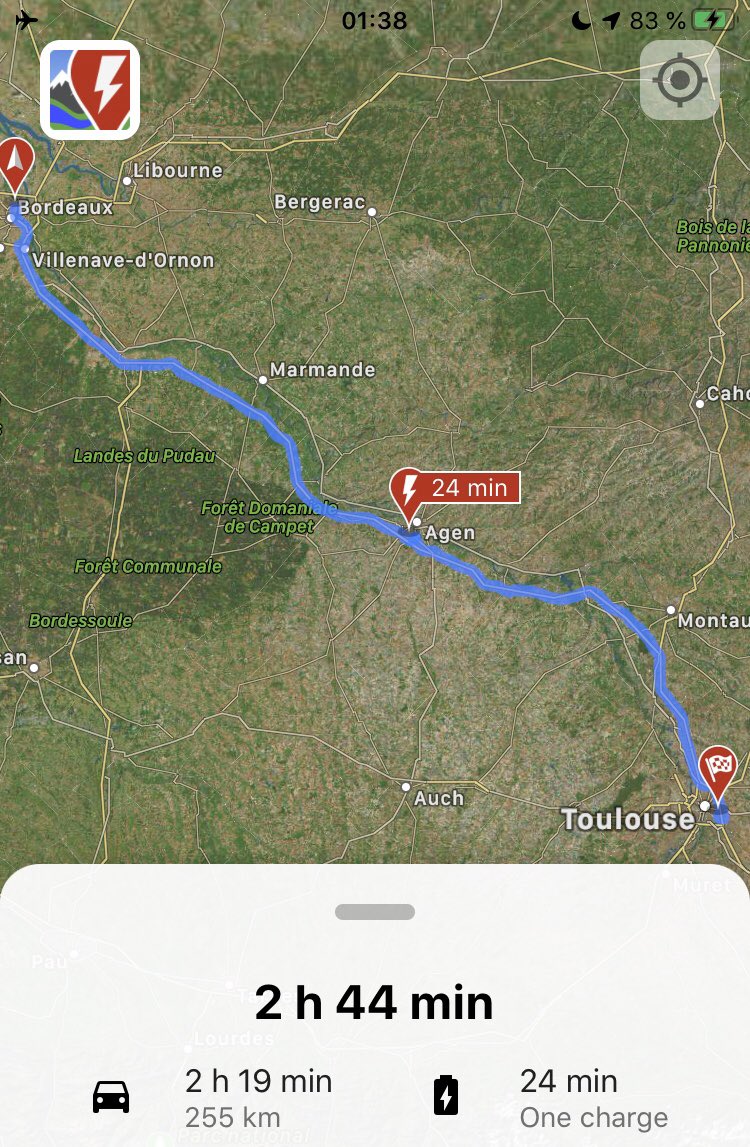
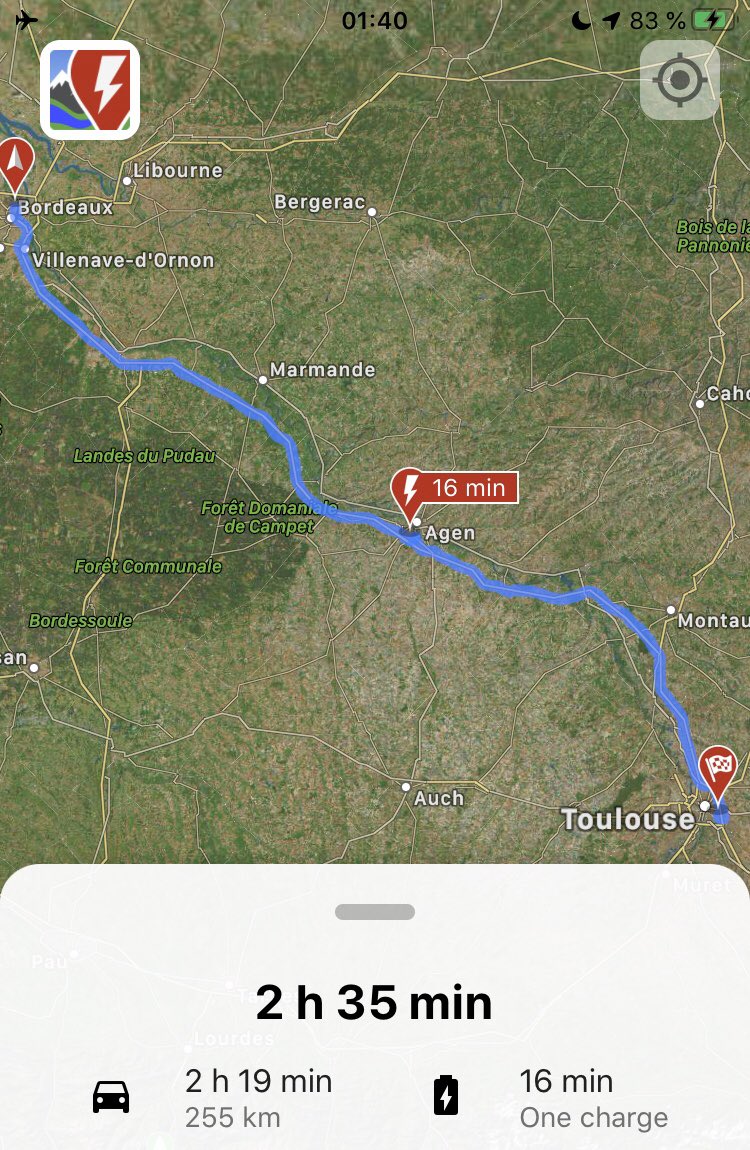

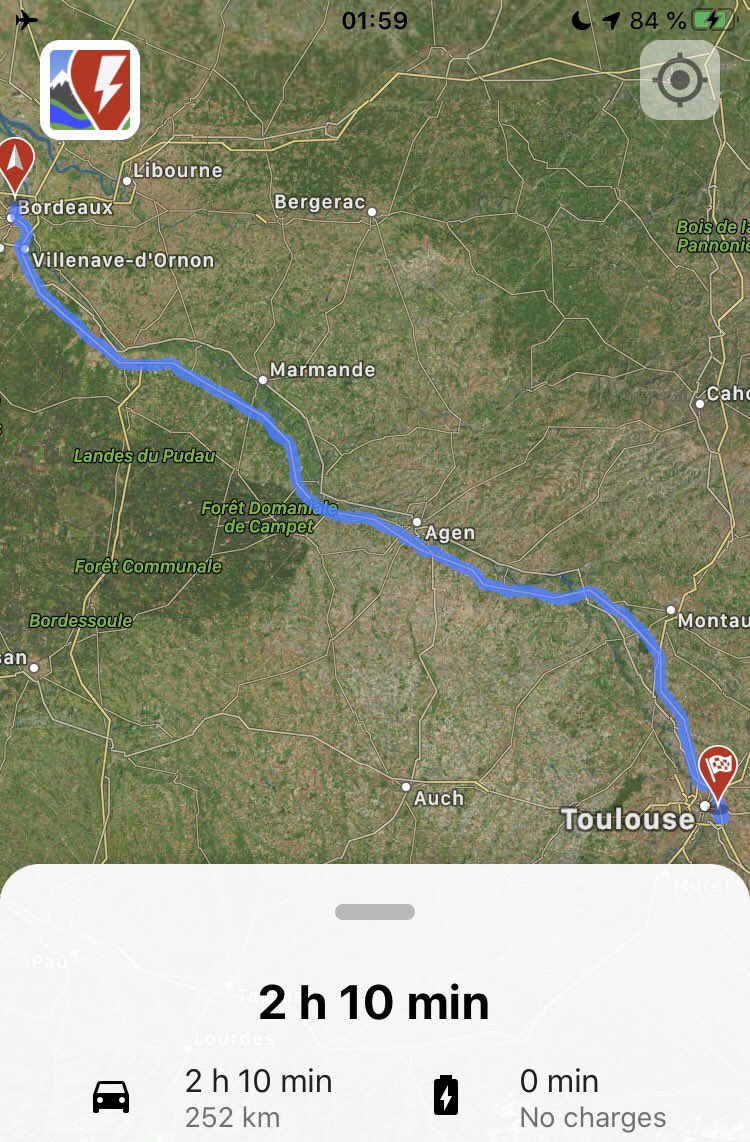
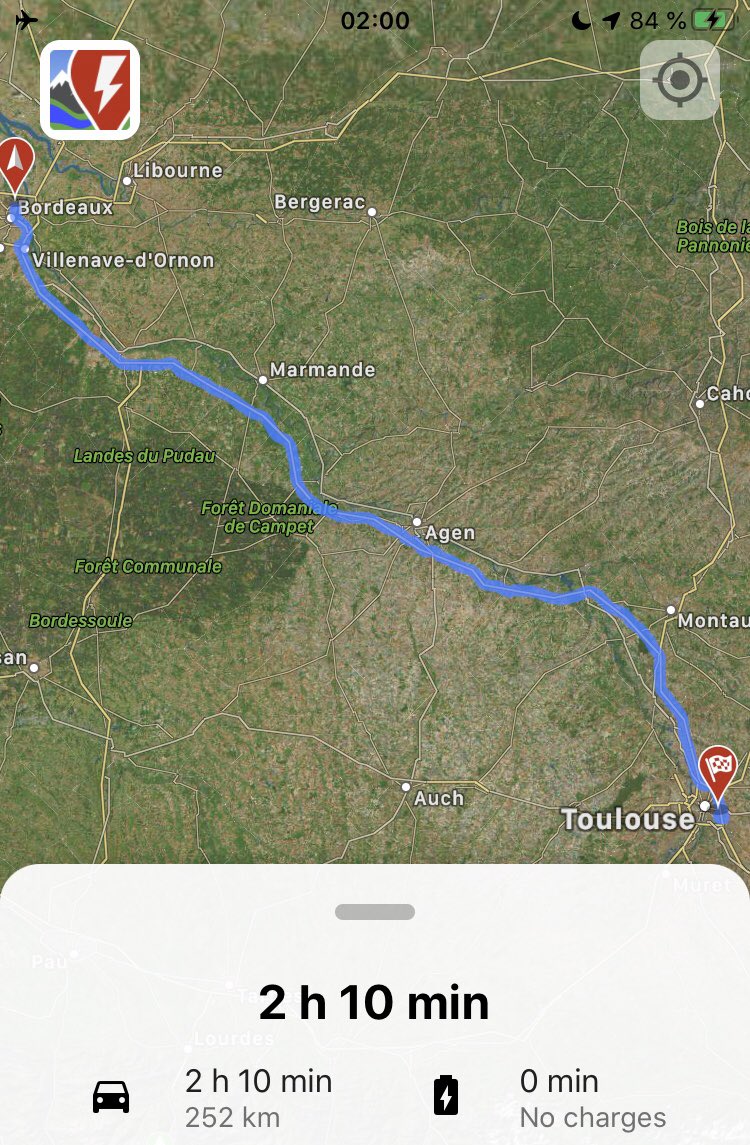

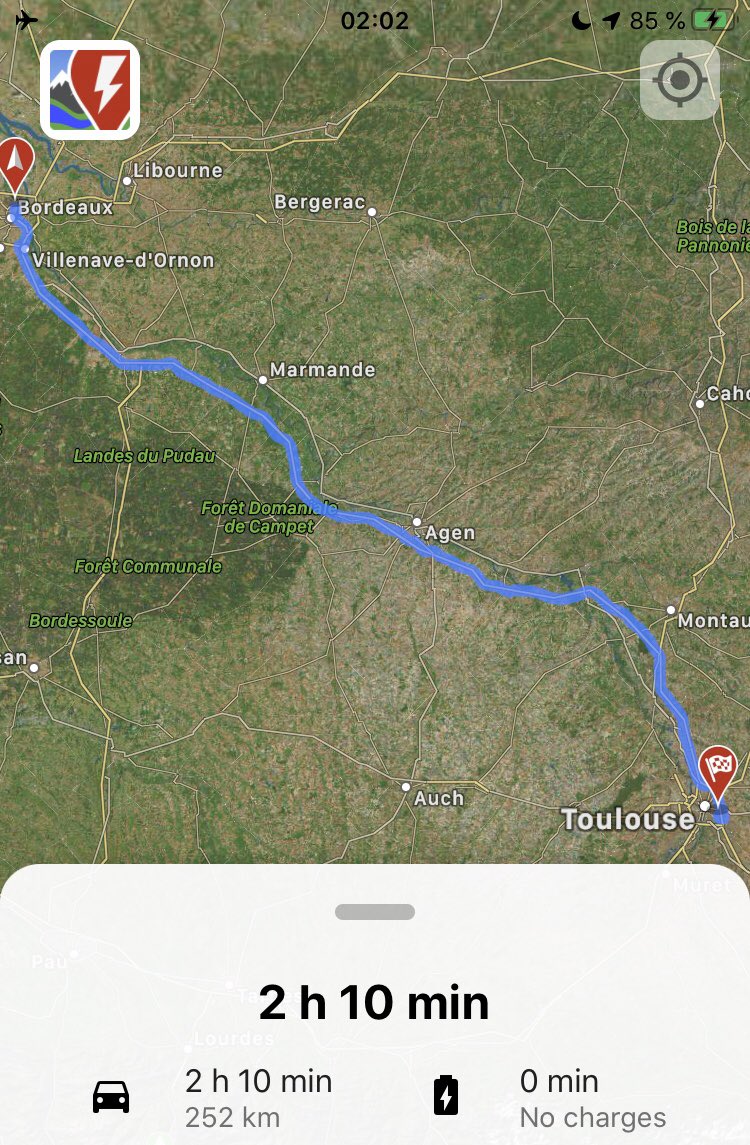
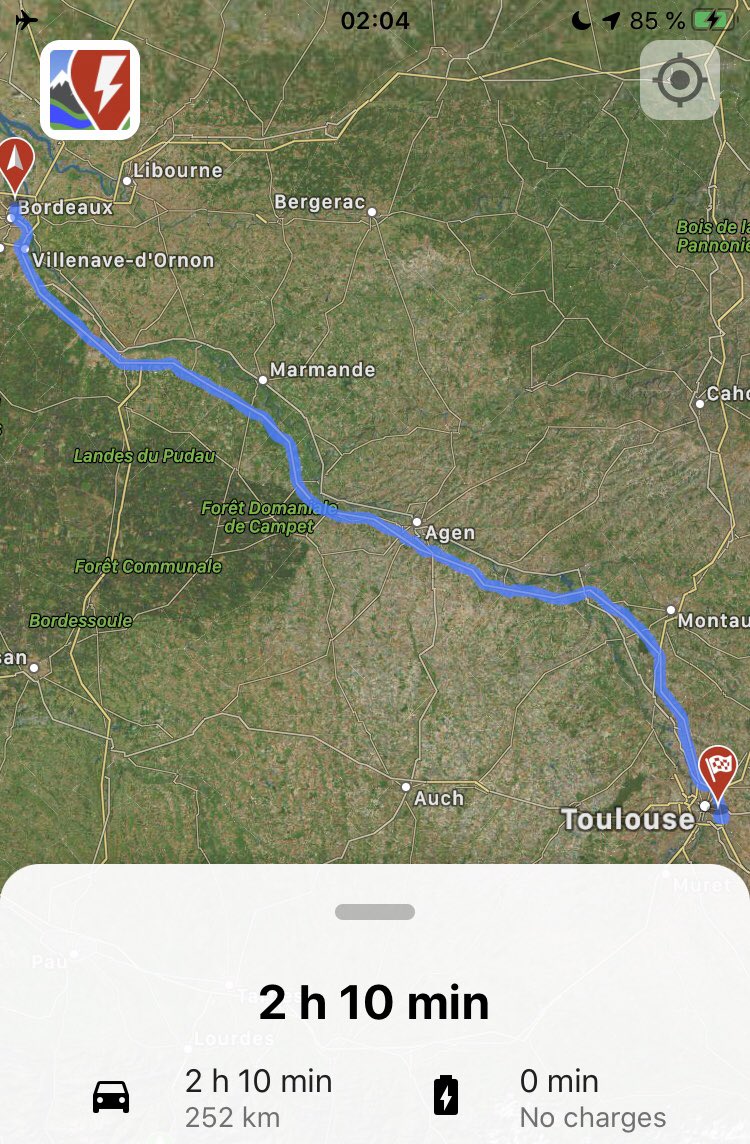
It takes 14% more time than any @Tesla but the cheapest one.
Food for thought 😐💭
Speed limited to 100 kph for the first leg to make it to the next charger.
It’s actually interesting because @RouteBetter proposes to drive the regular road (limited to 110 kph anyway) instead of the longer toll road (limited to 130 kph)
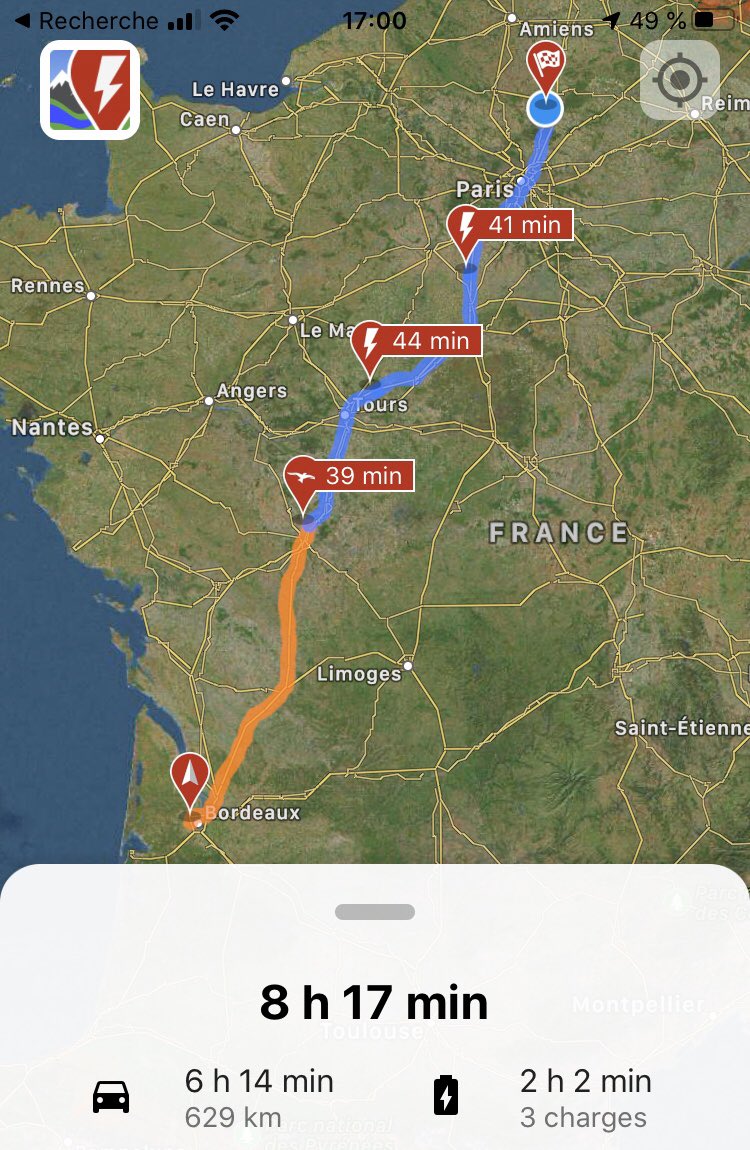
Speed limited to 110 kph for the same first leg to make it to the next charger ☺️
It’s ok though, the huge majority of that route is limited to 110 kph (except about 20 km close to @Bordeaux).
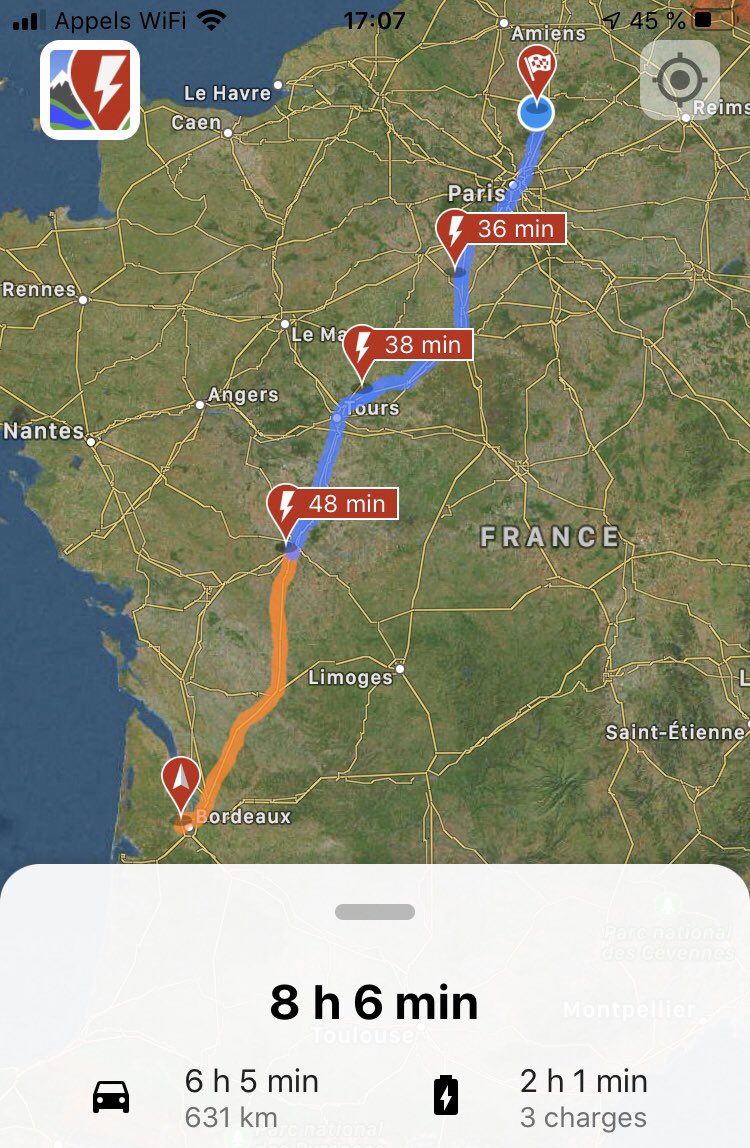
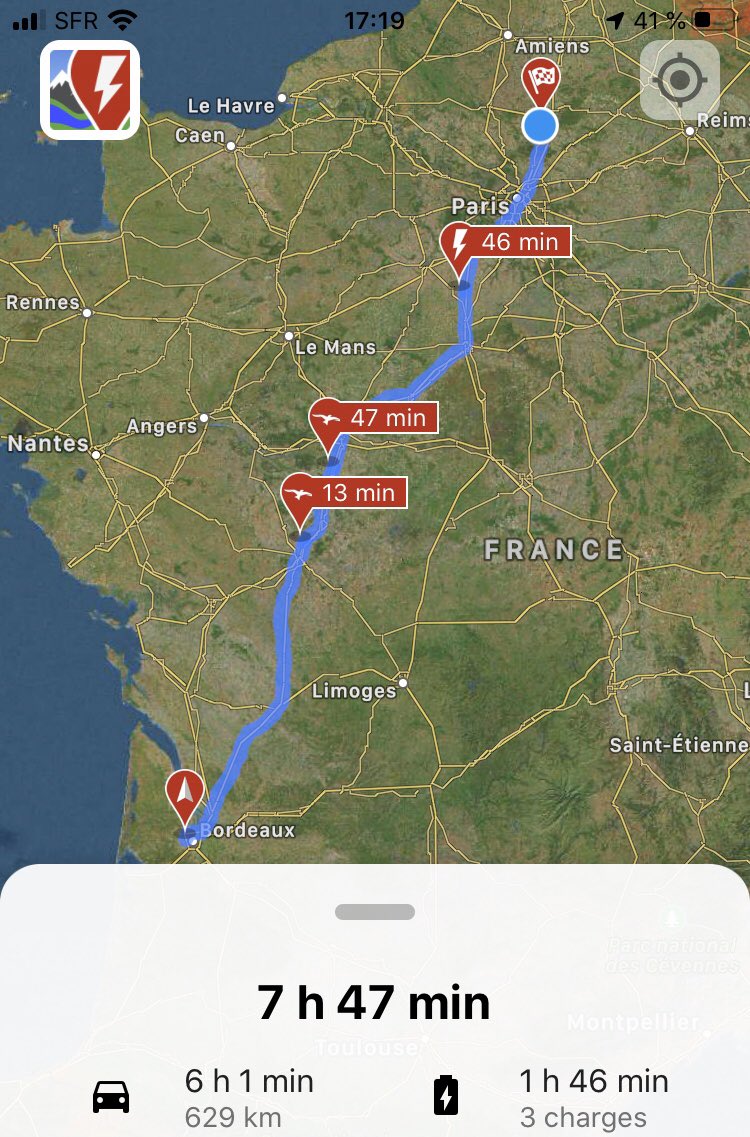
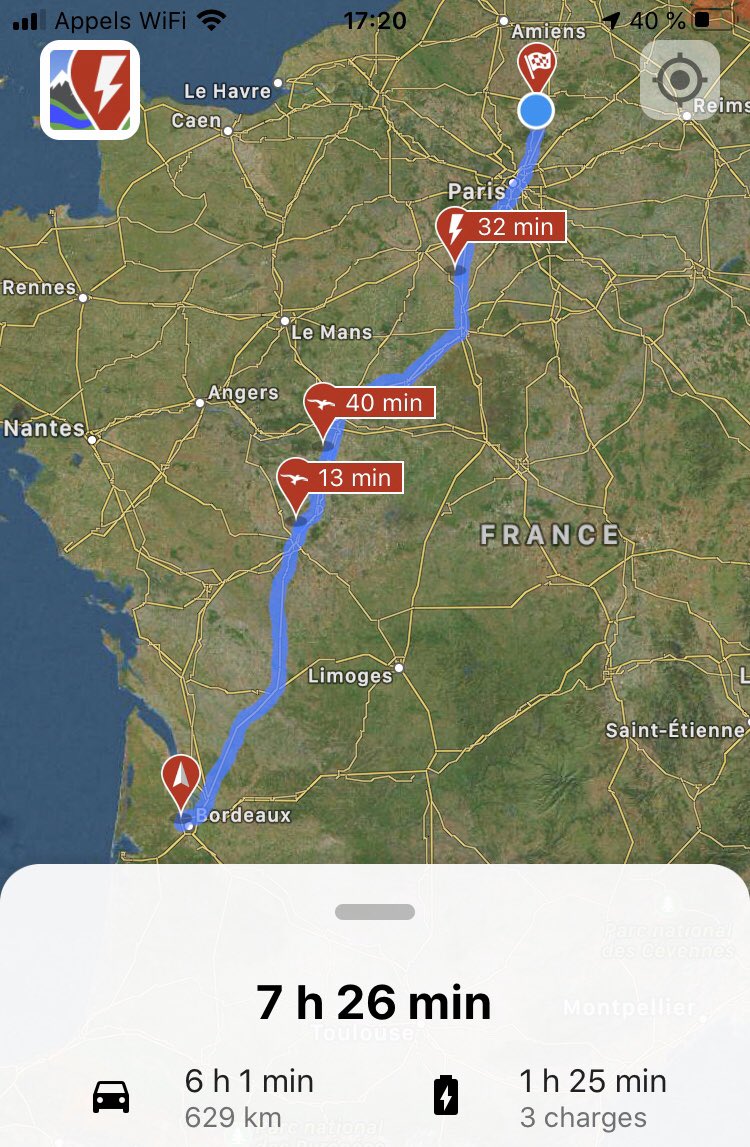
Speed limited to 100 kph for rhe first leg to make it to the next charger. Also a detour via Chartres to reach a @IONITY_EU #CCS #DCFC 😏
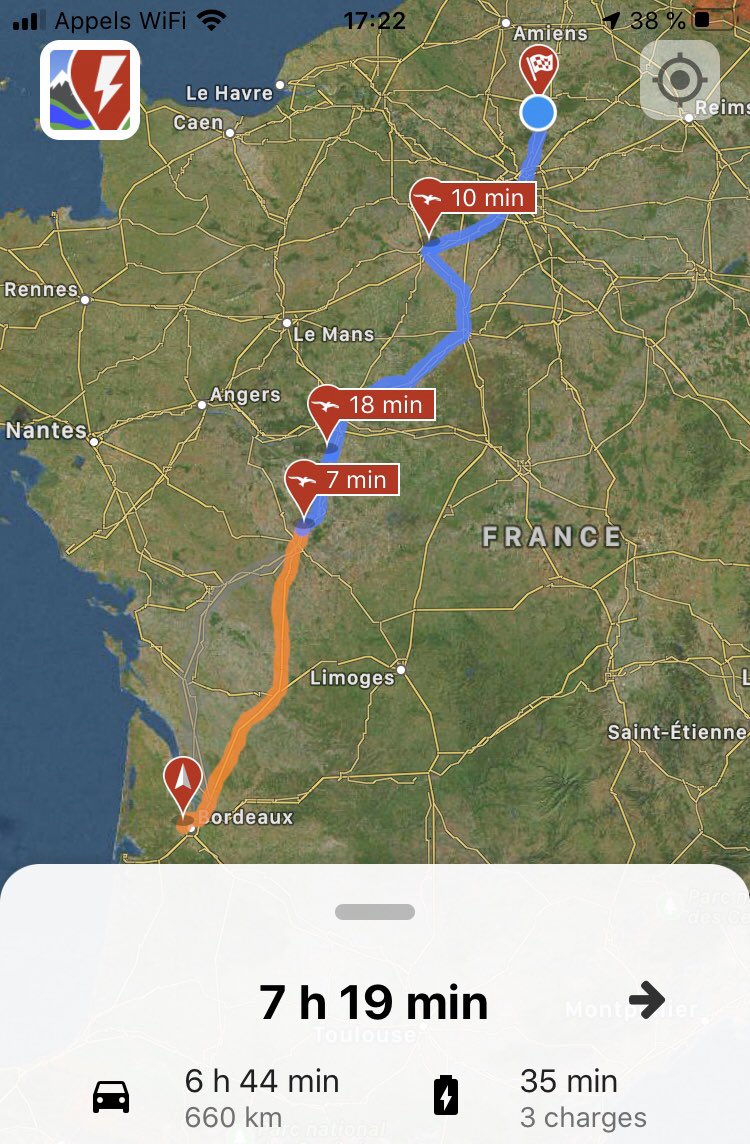
Speed limited to 110 kph for the second leg to make it to the next charger, which requires a detour via Chartres 😒
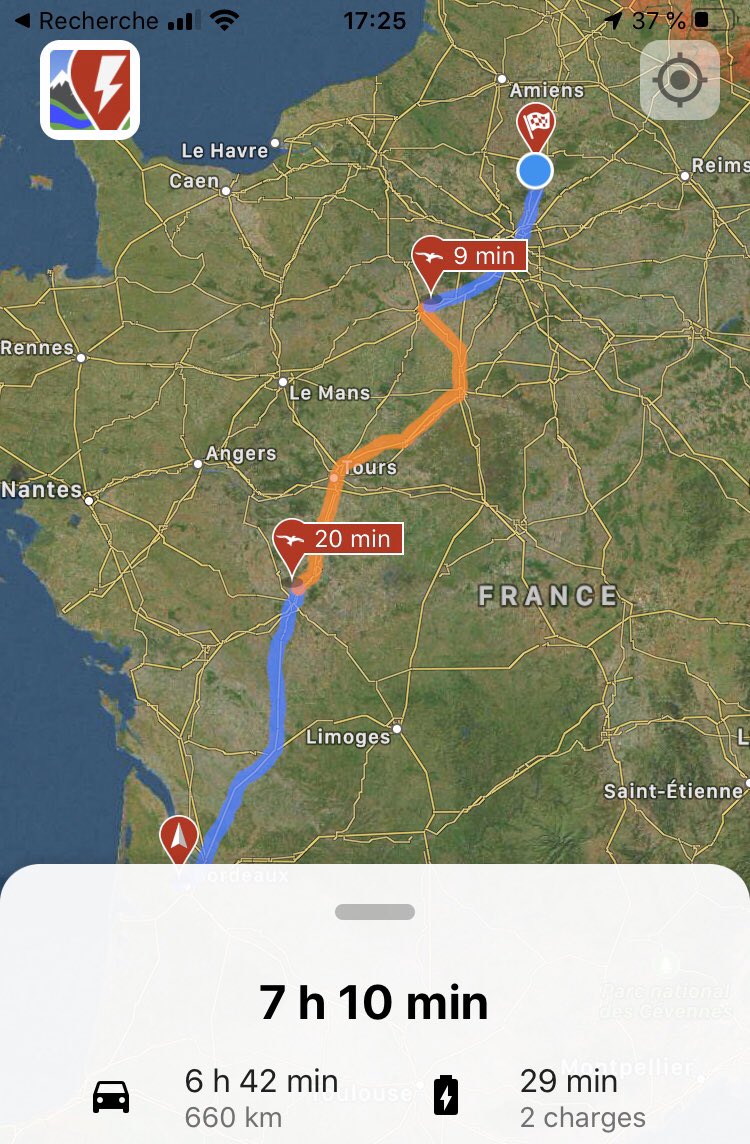
Speed limited to 110 kph for the second leg to make it to the next charger, with a necessary detour via Chartres to make it to @IONITY_EU #CCS #DCFC 🧐
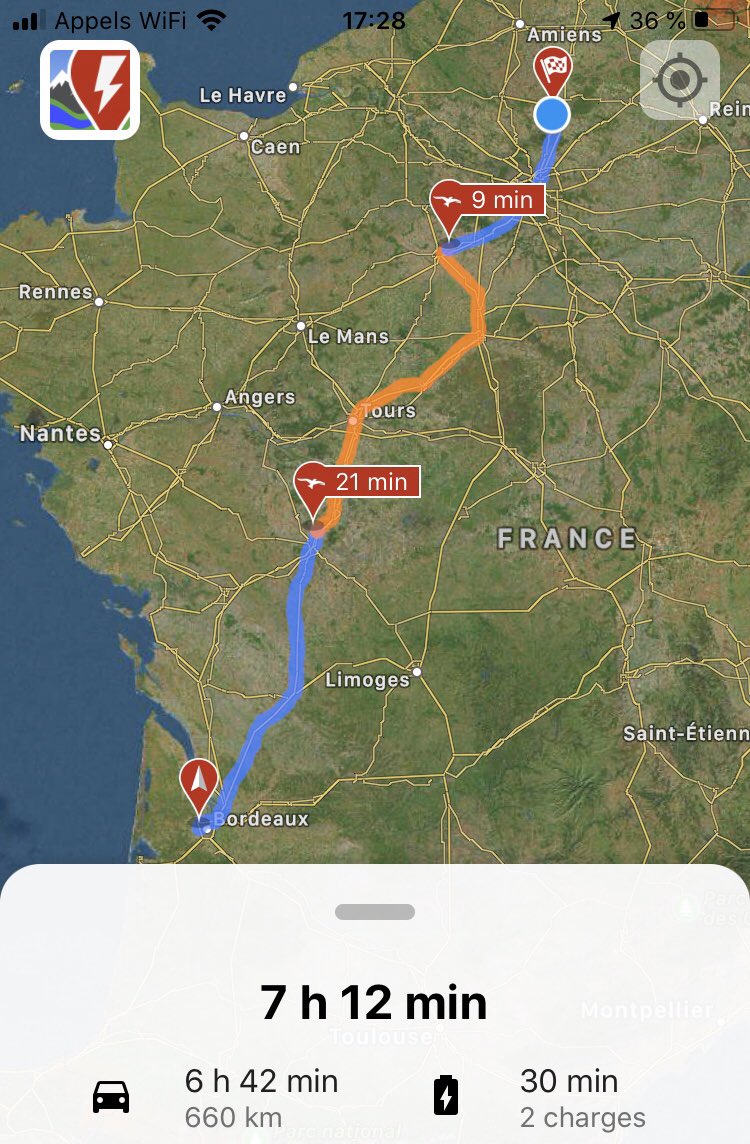
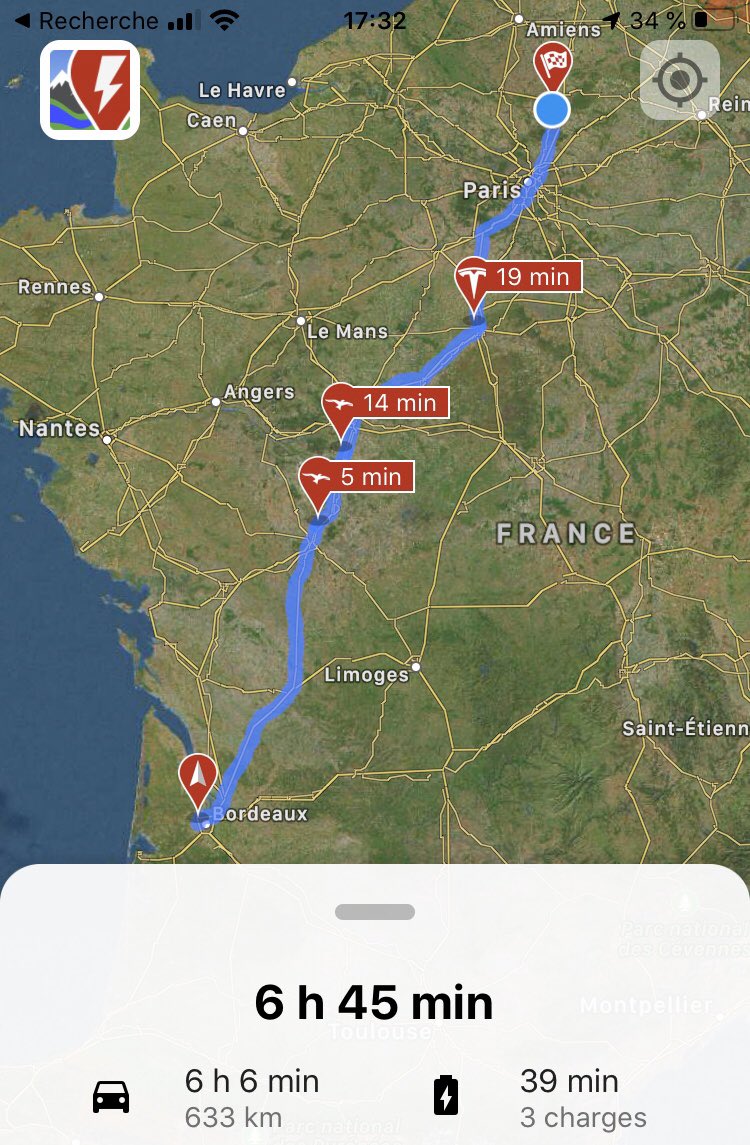
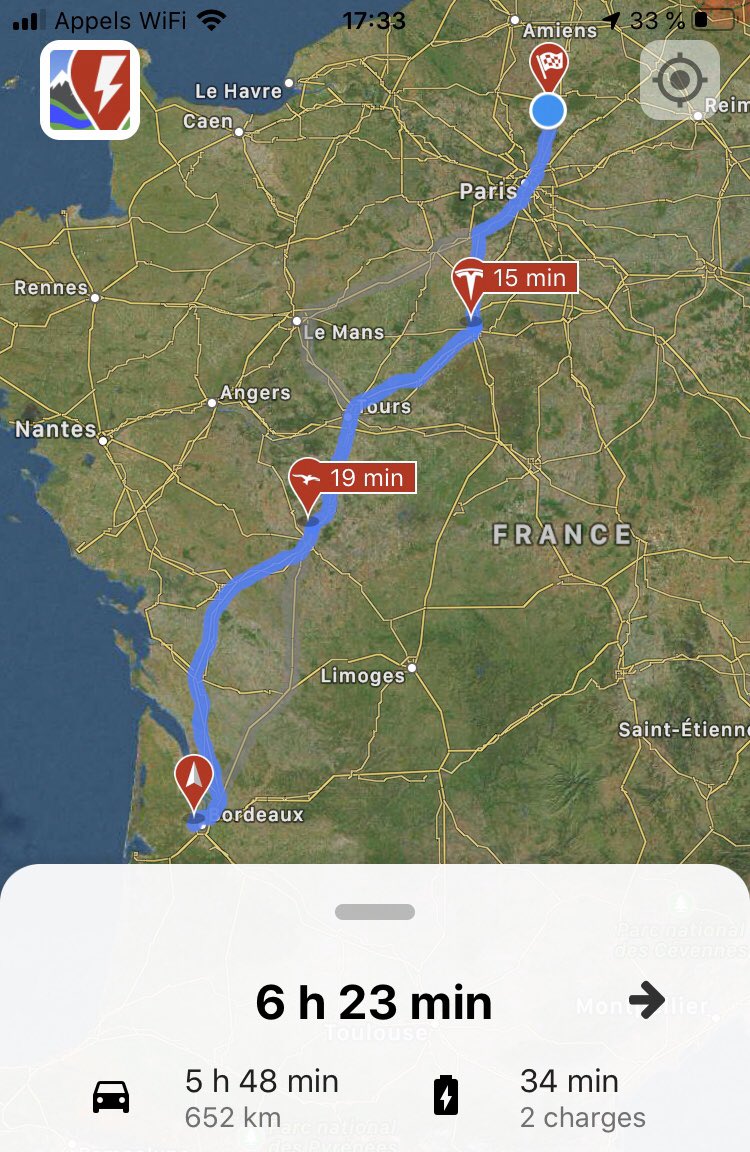
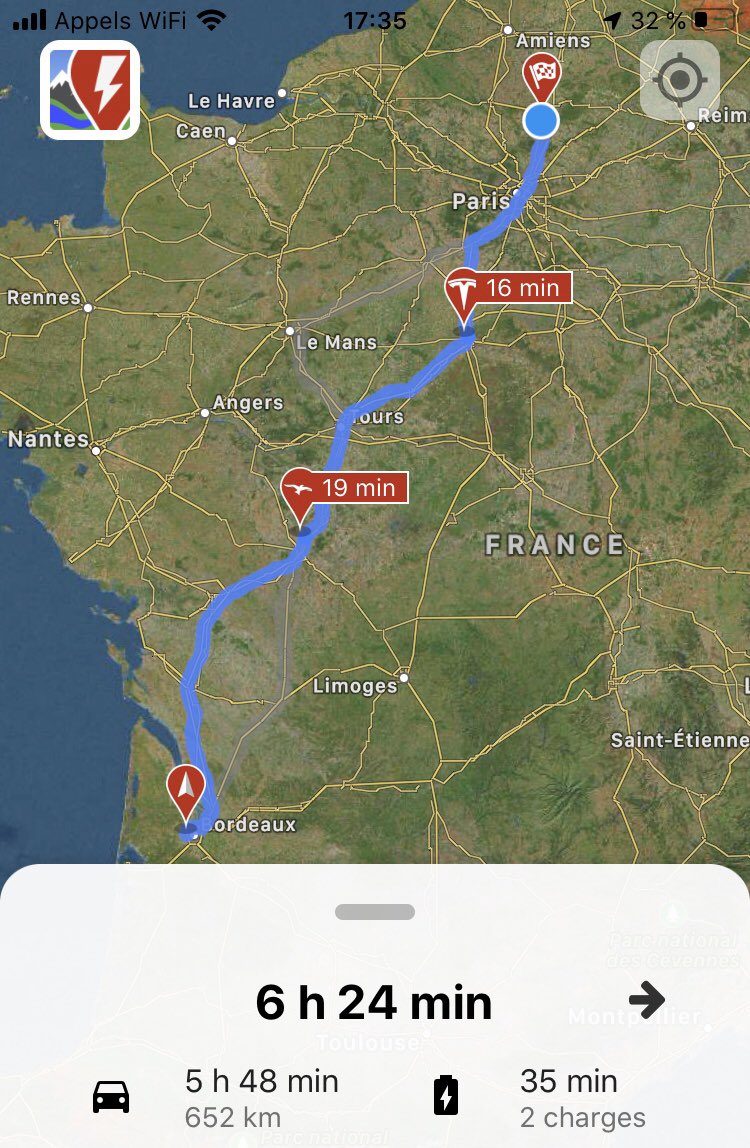
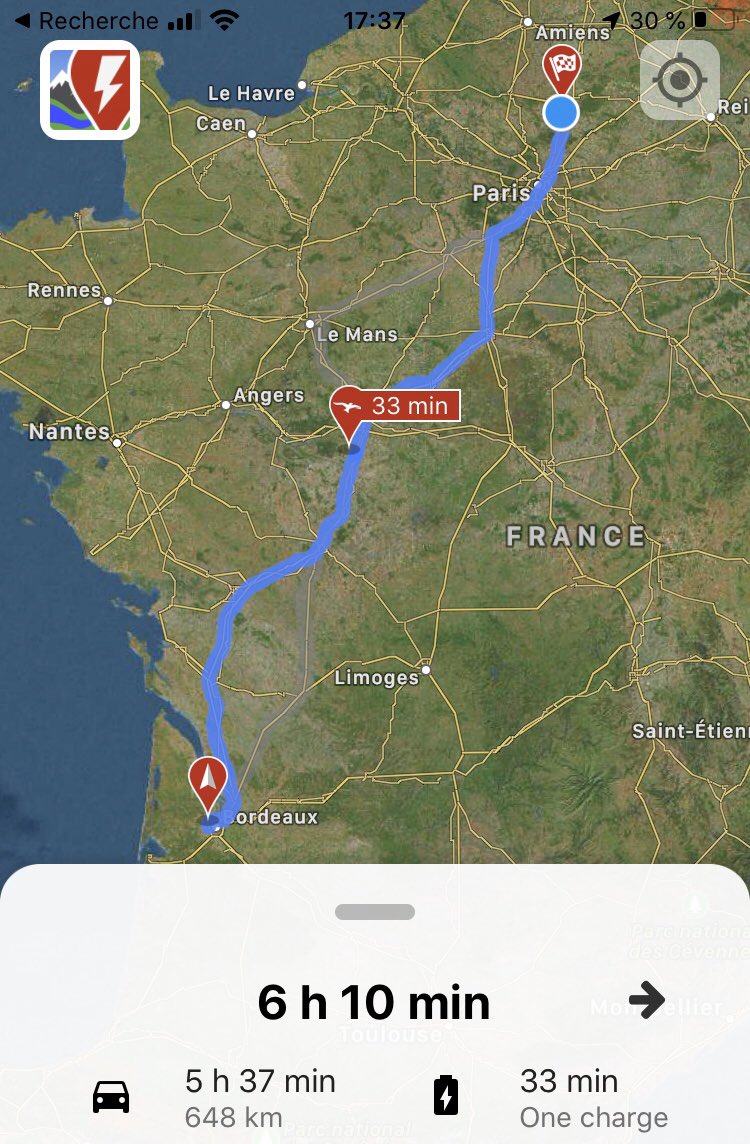
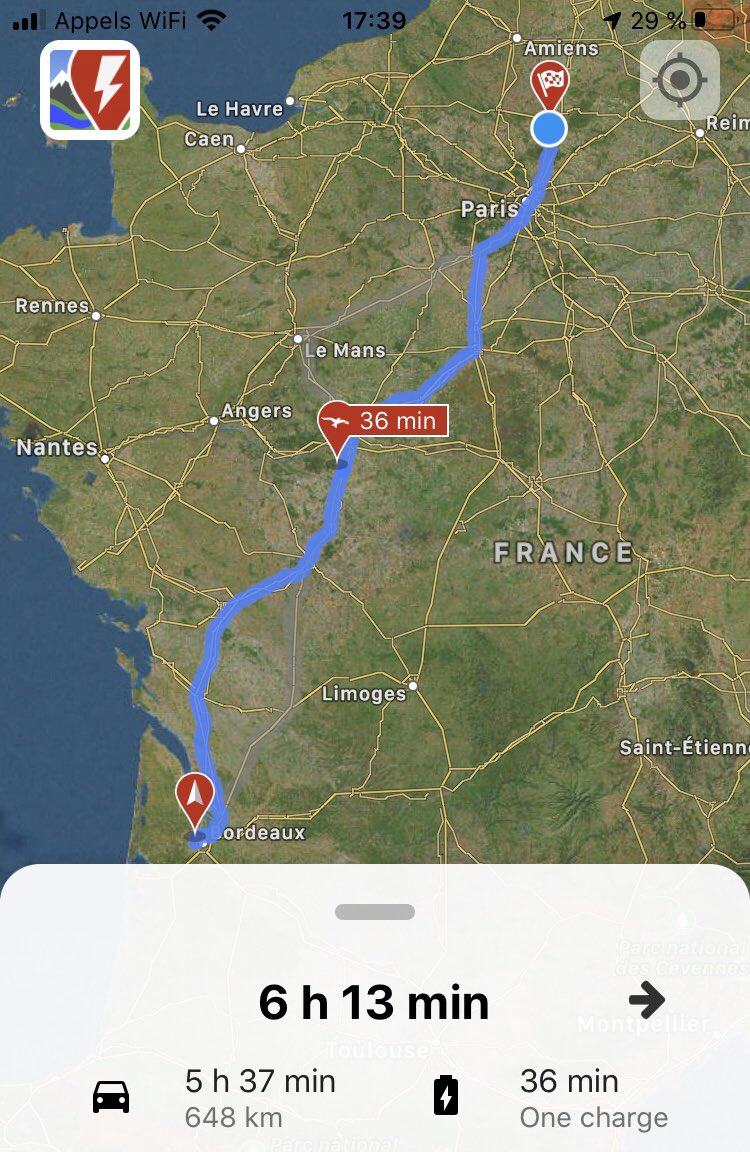
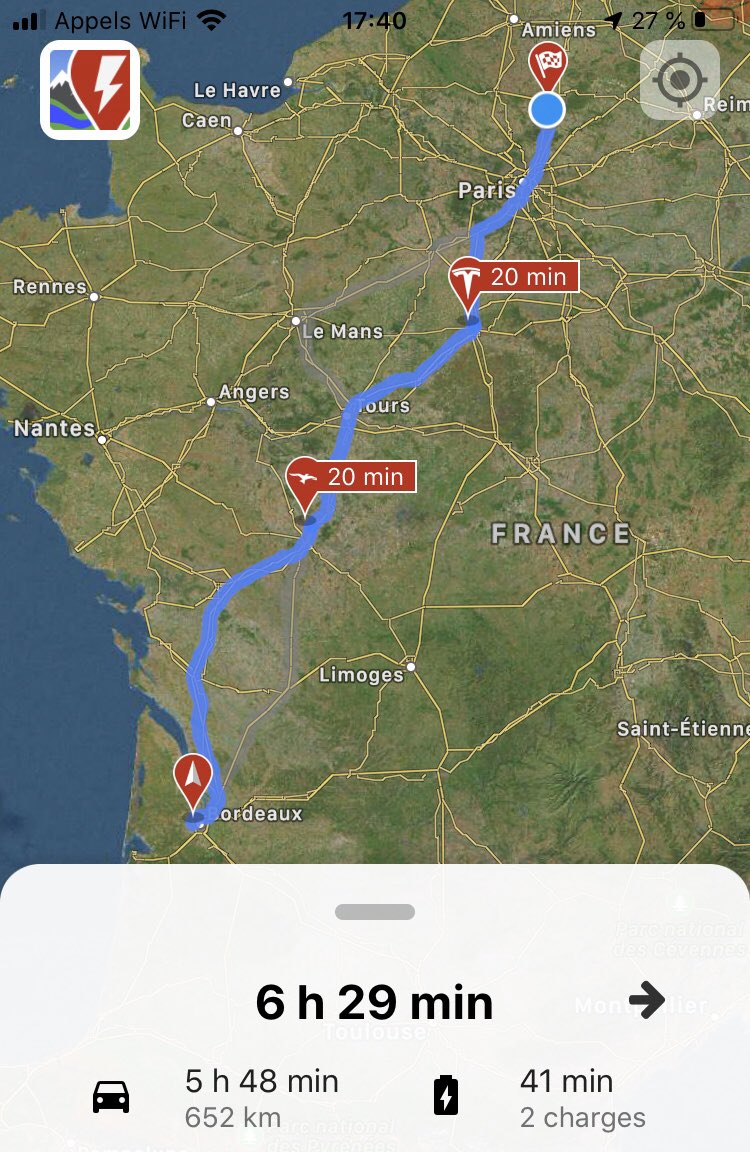
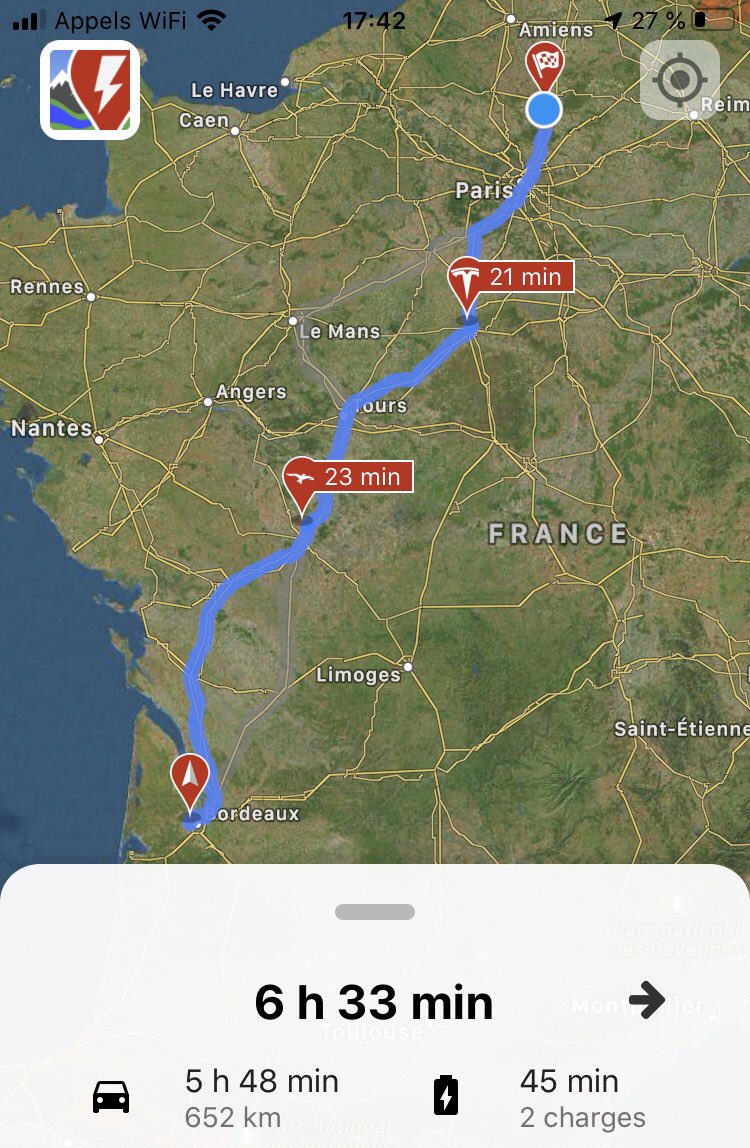
The trip is feasible with a compact car but takes much longer 😌
That’s the normal route, and the e-208 doesn’t even have to reduce its speed along the way 😊
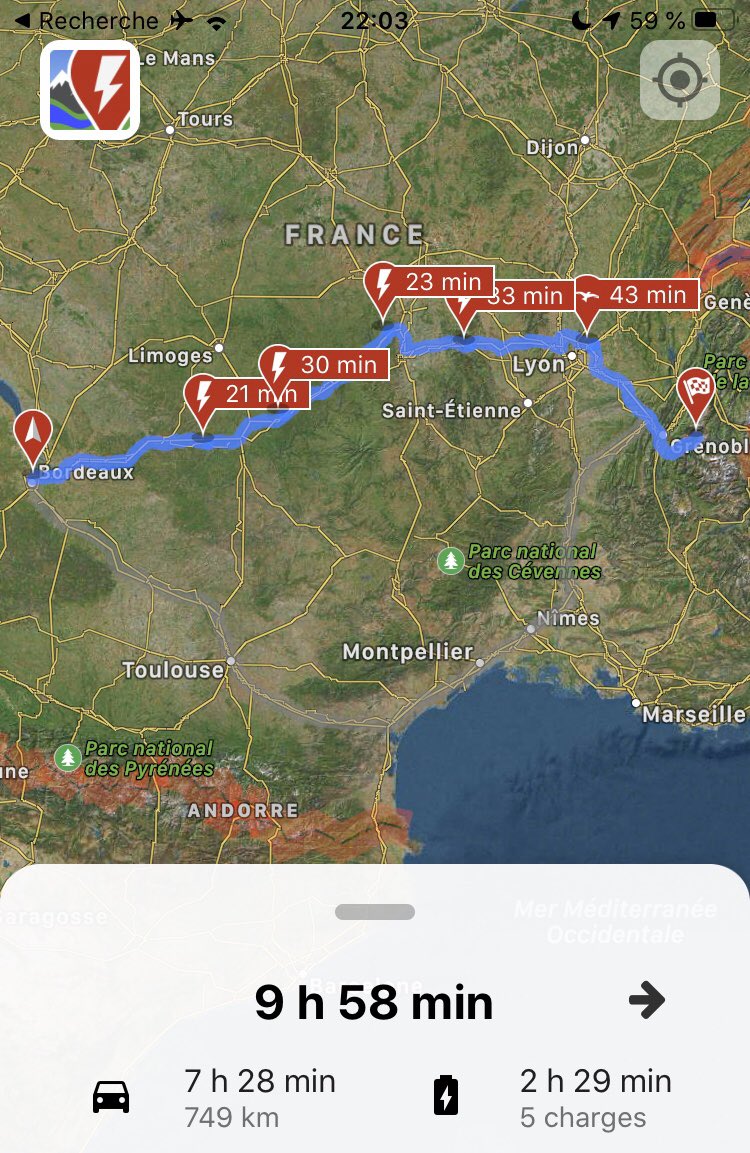
It also has to take the longer route.
Speed limited to 110 kph for on the first leg to make it to the next charger 😞
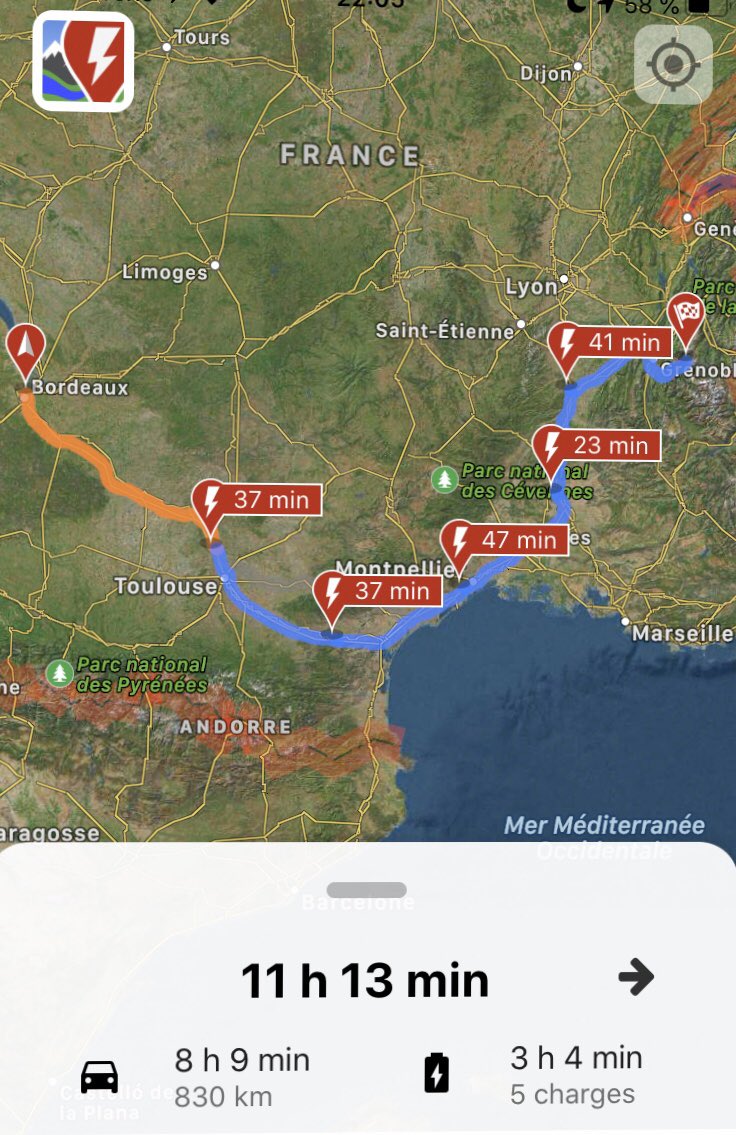

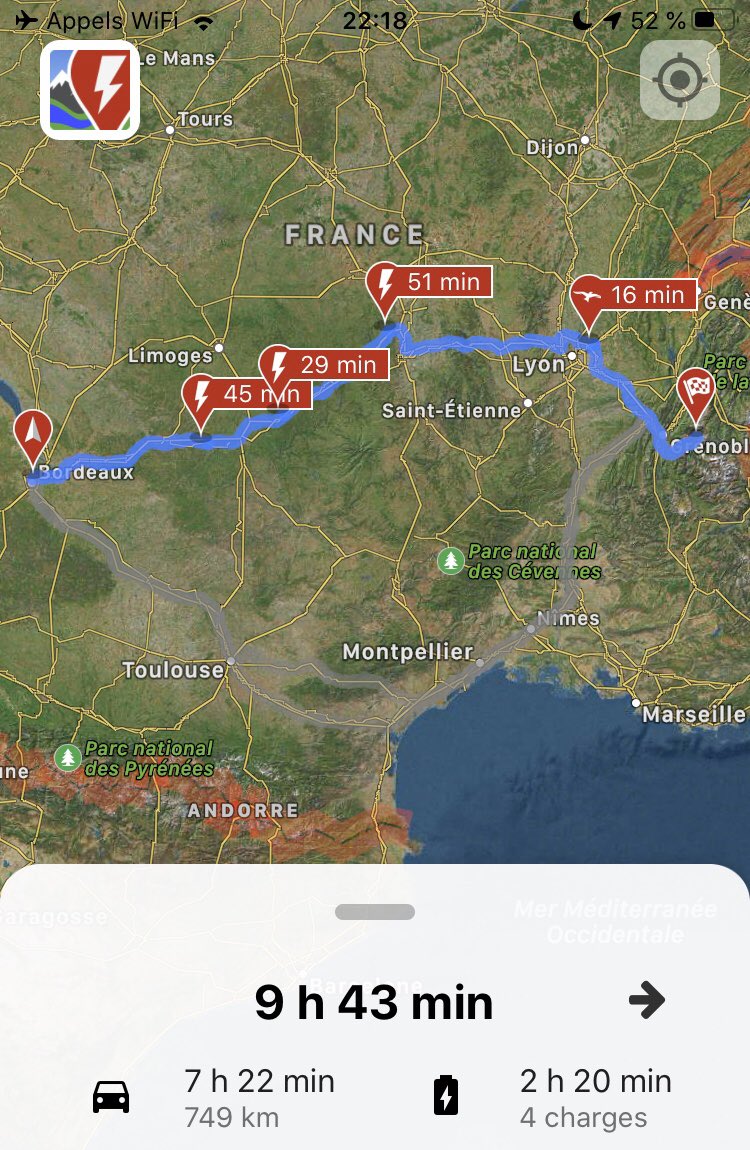
It takes the longer route...
Speed limited to 110 kph on the second leg to make it to the next charger 😒
